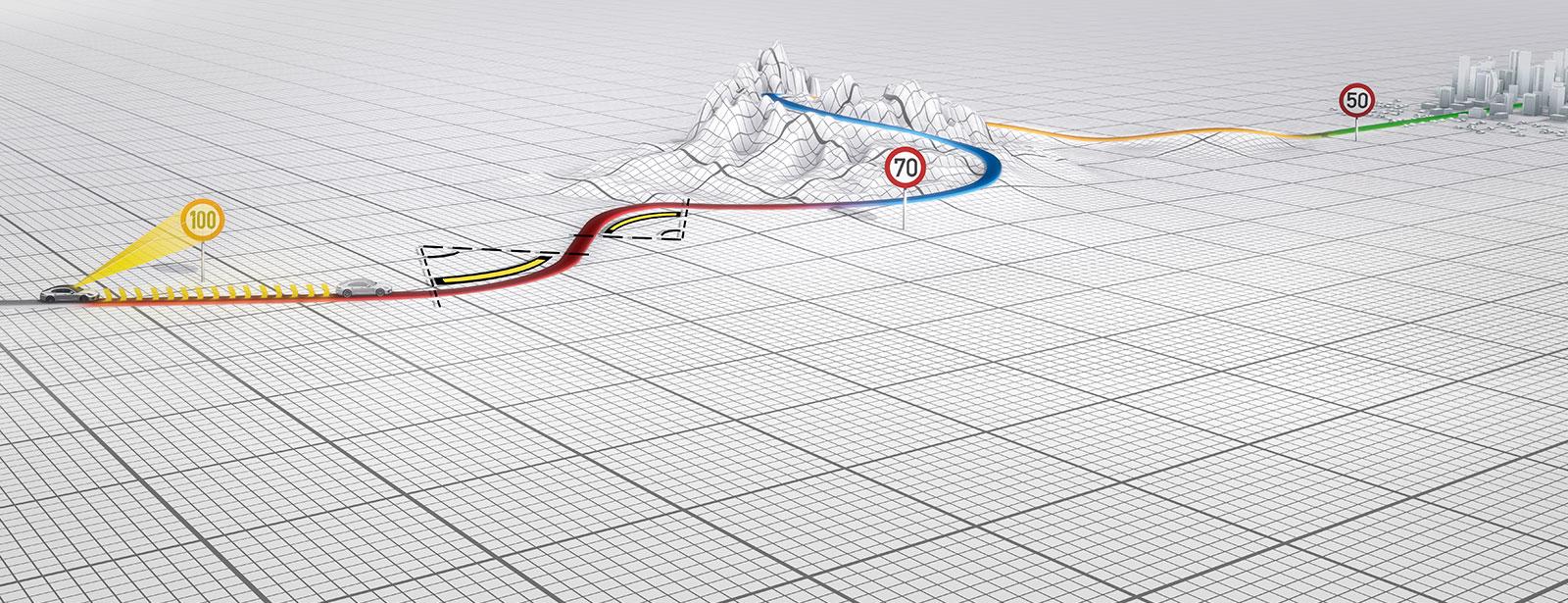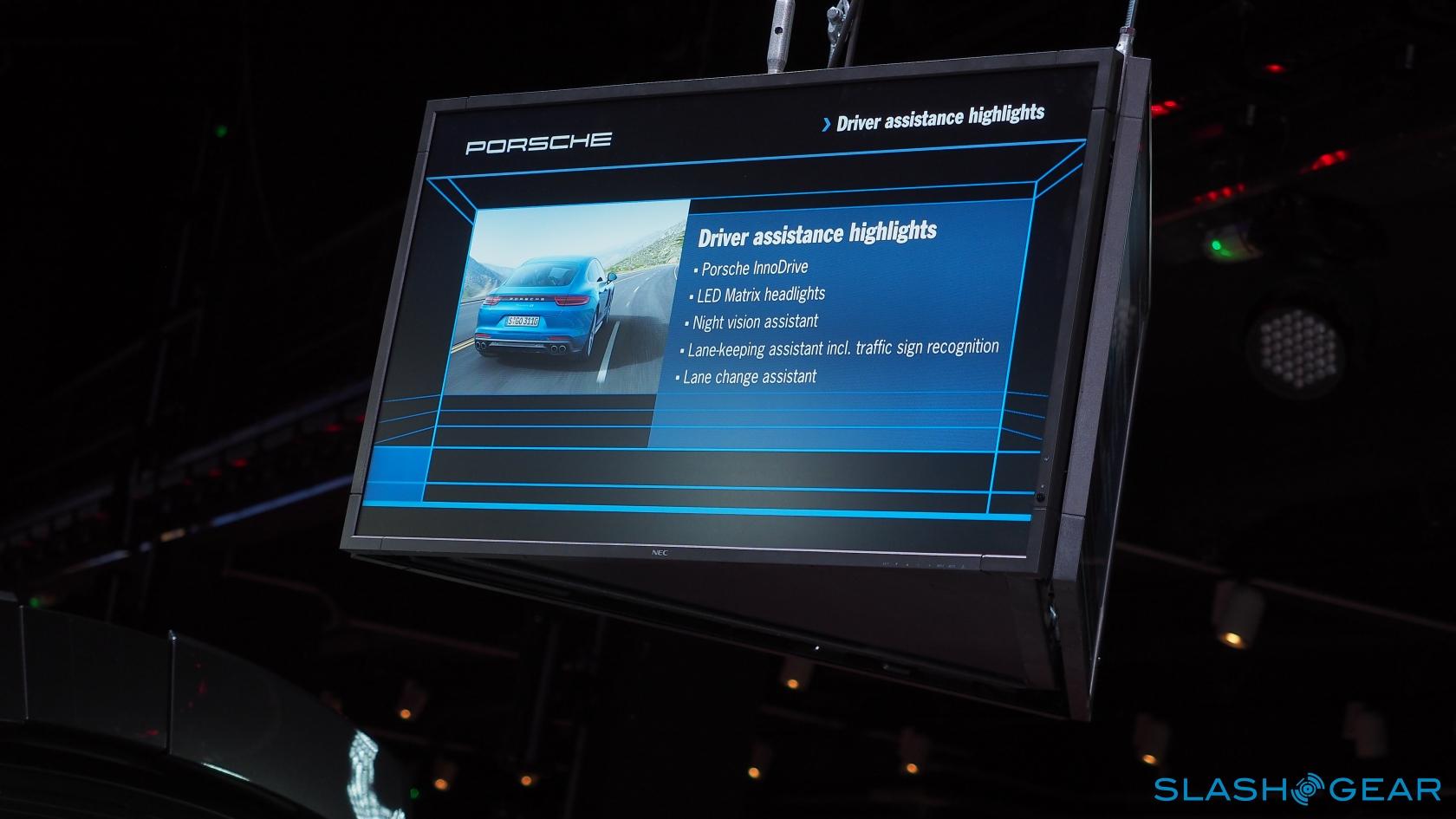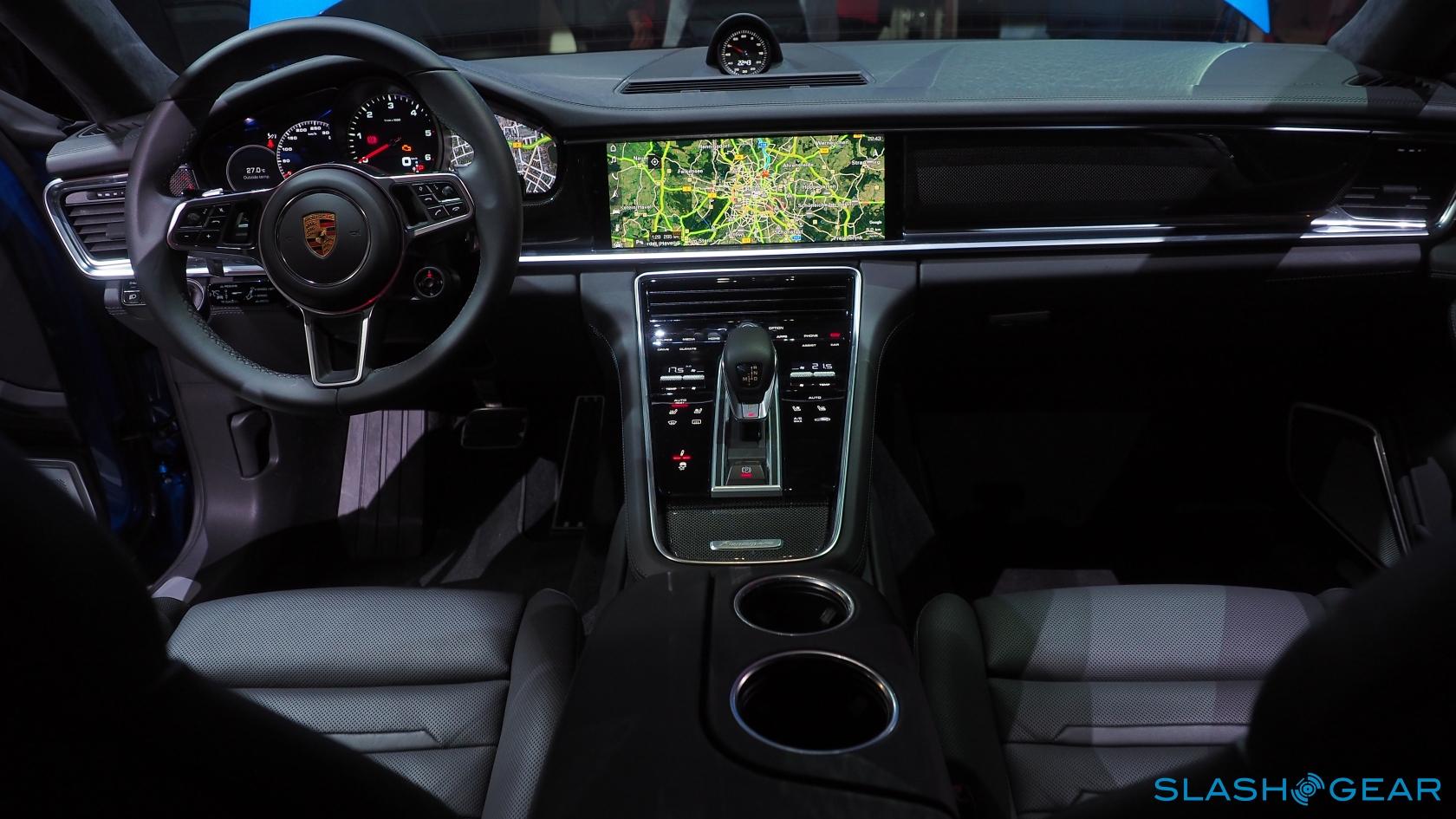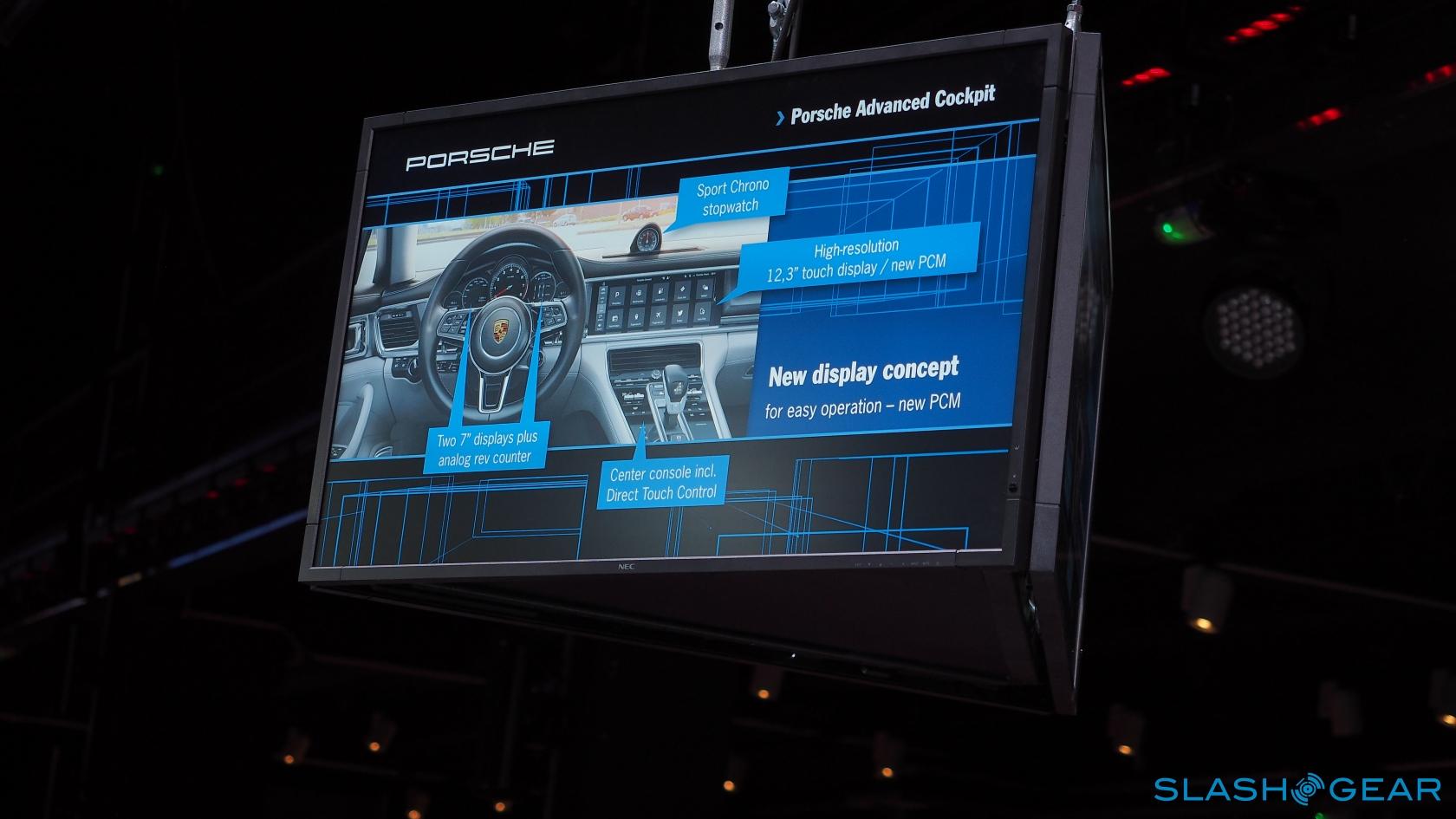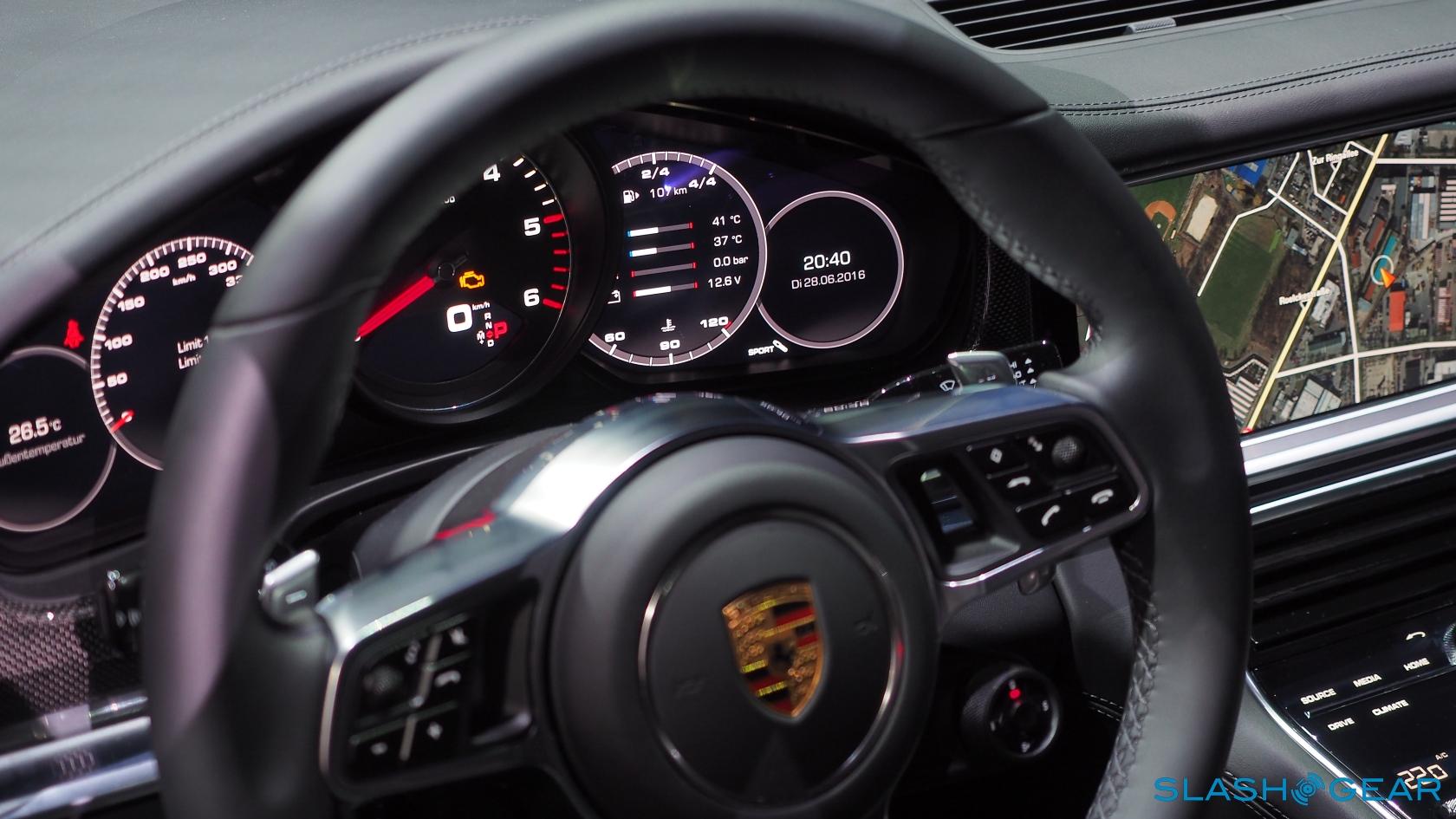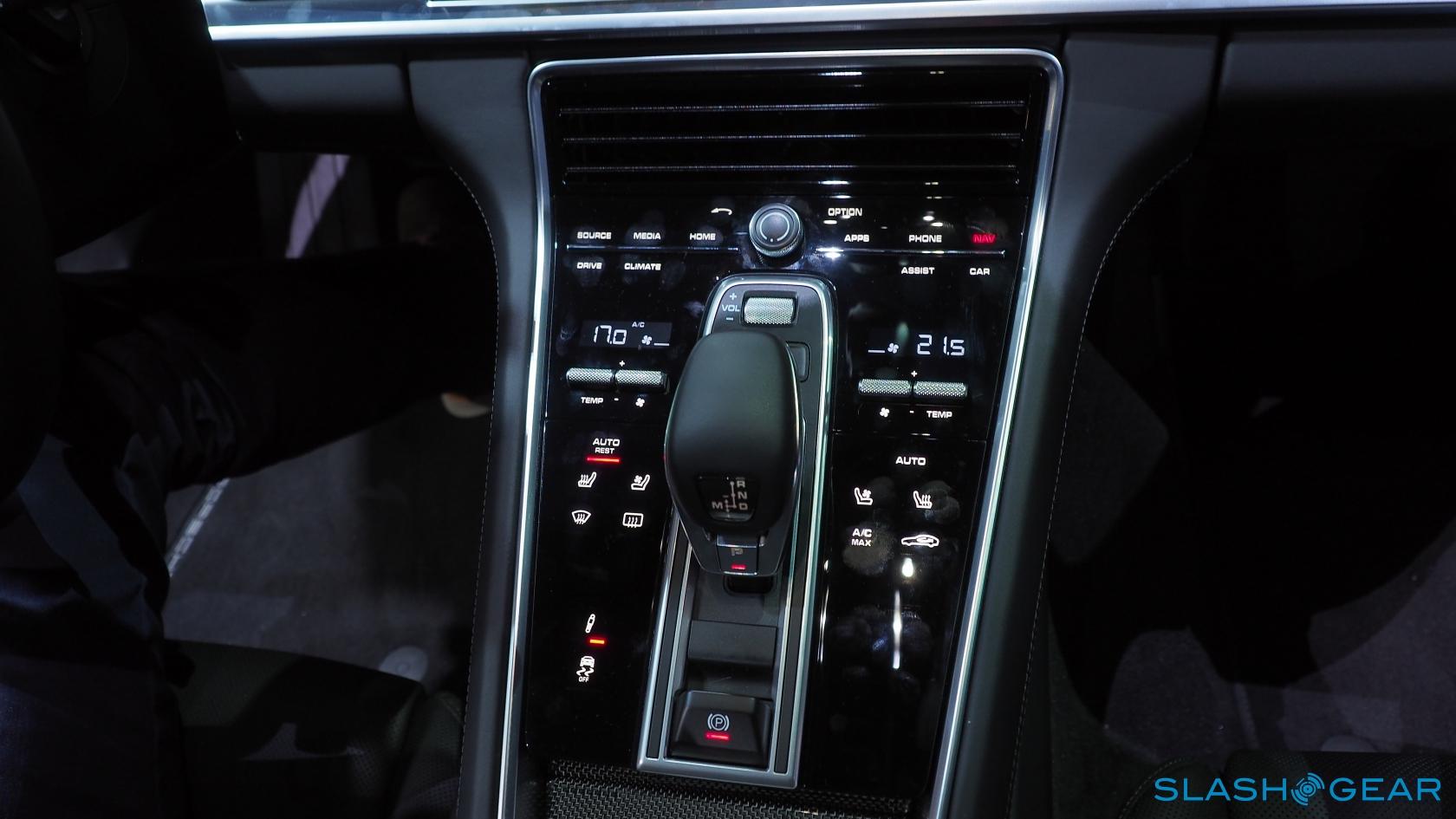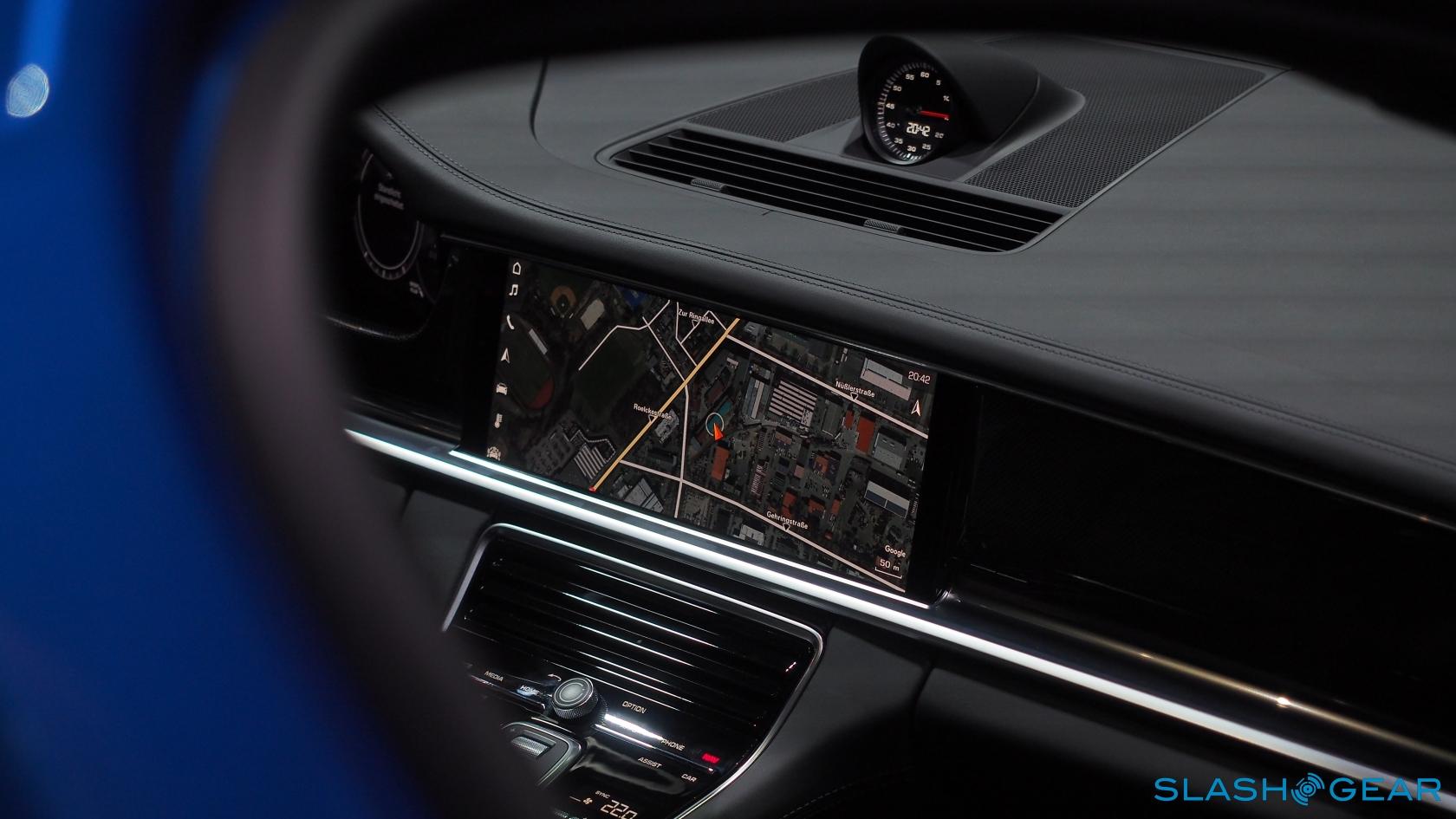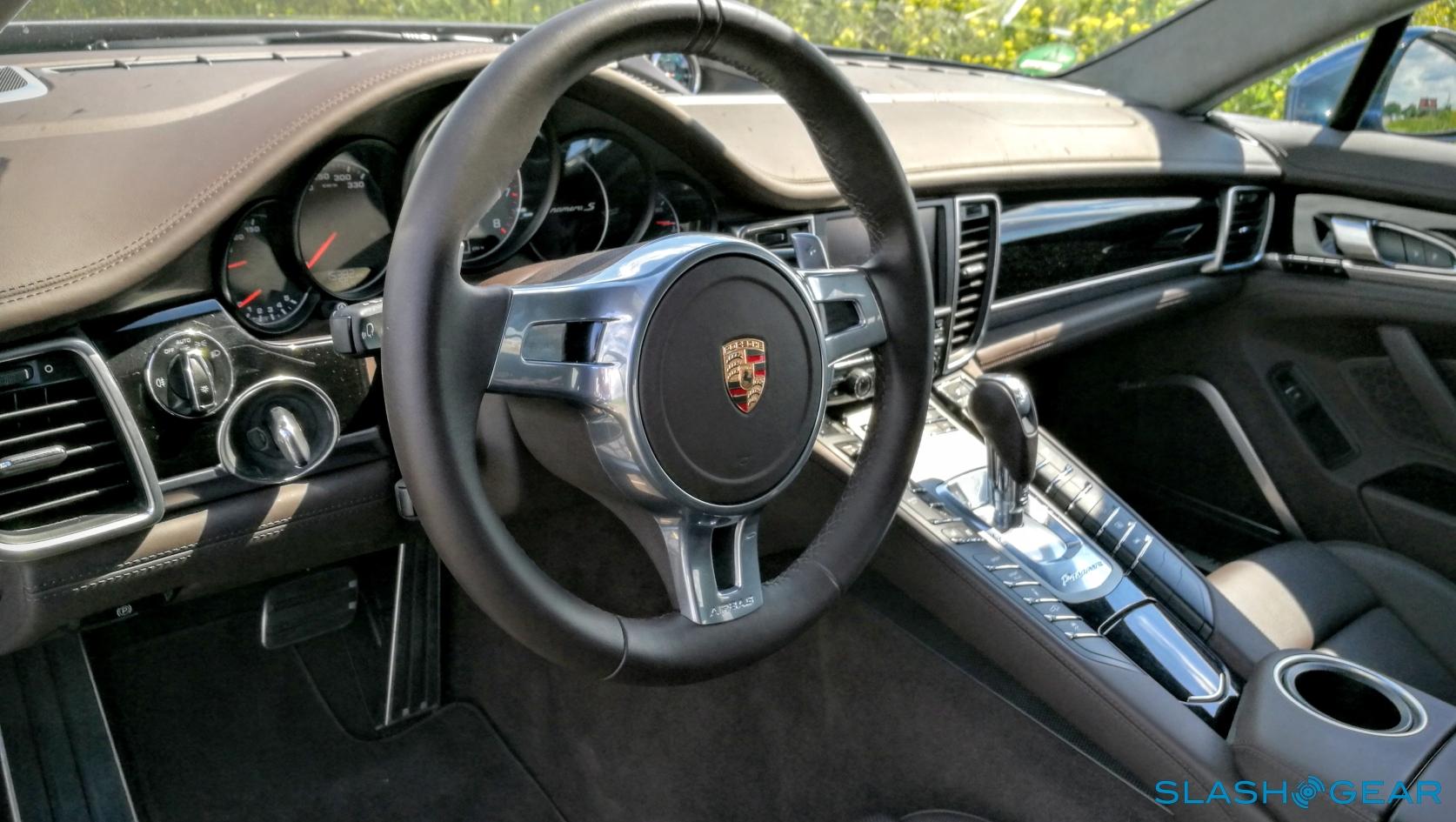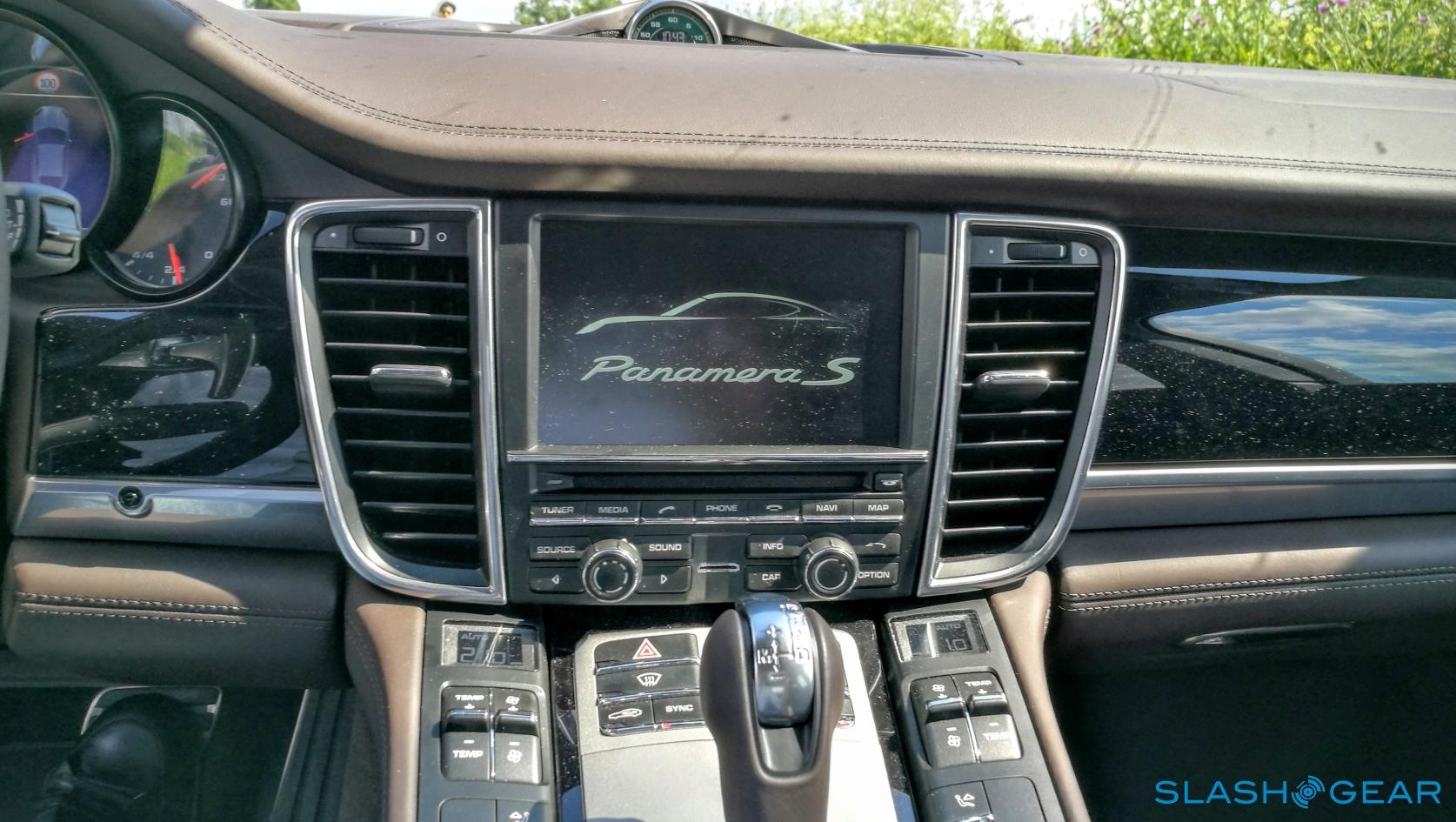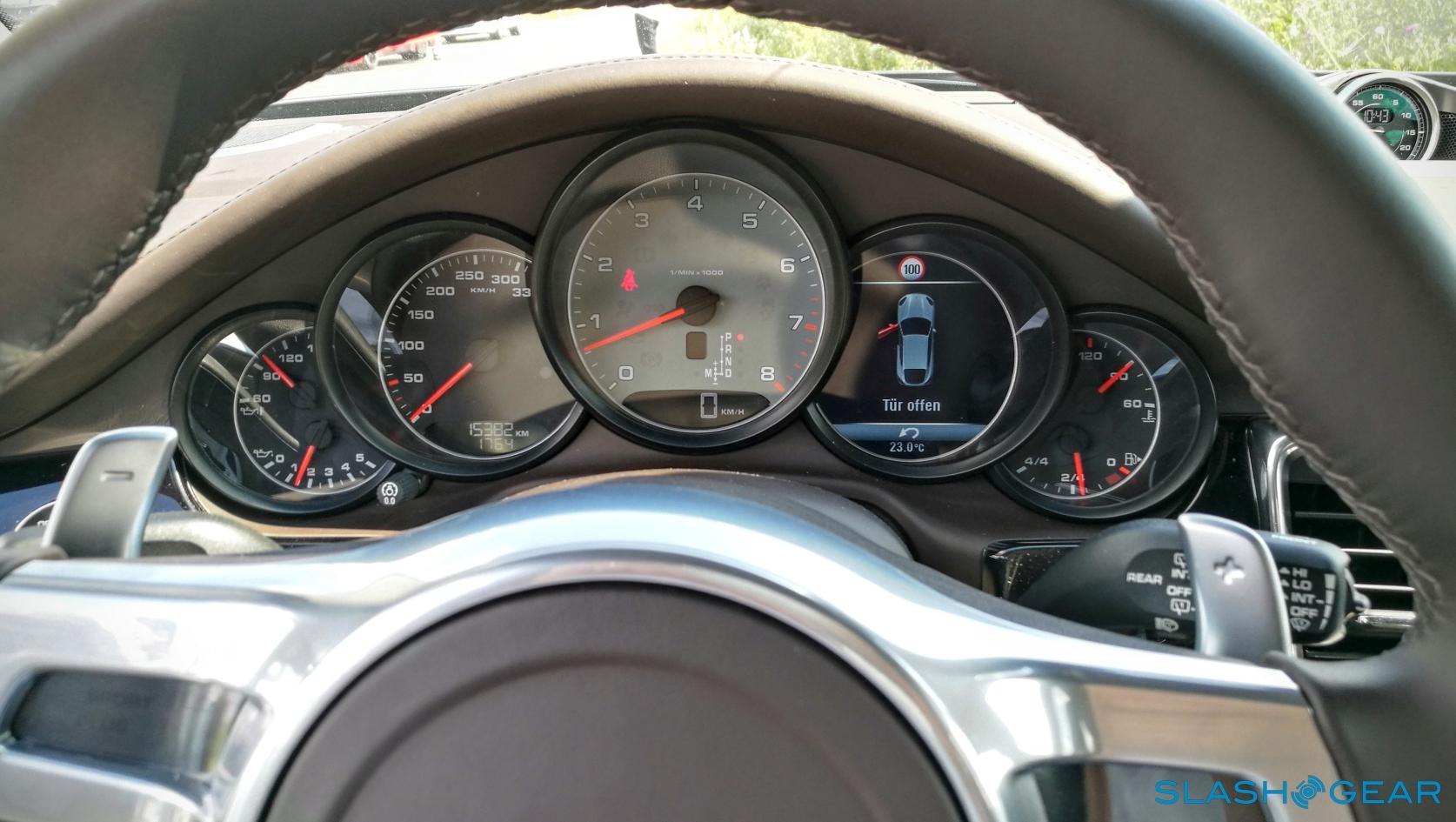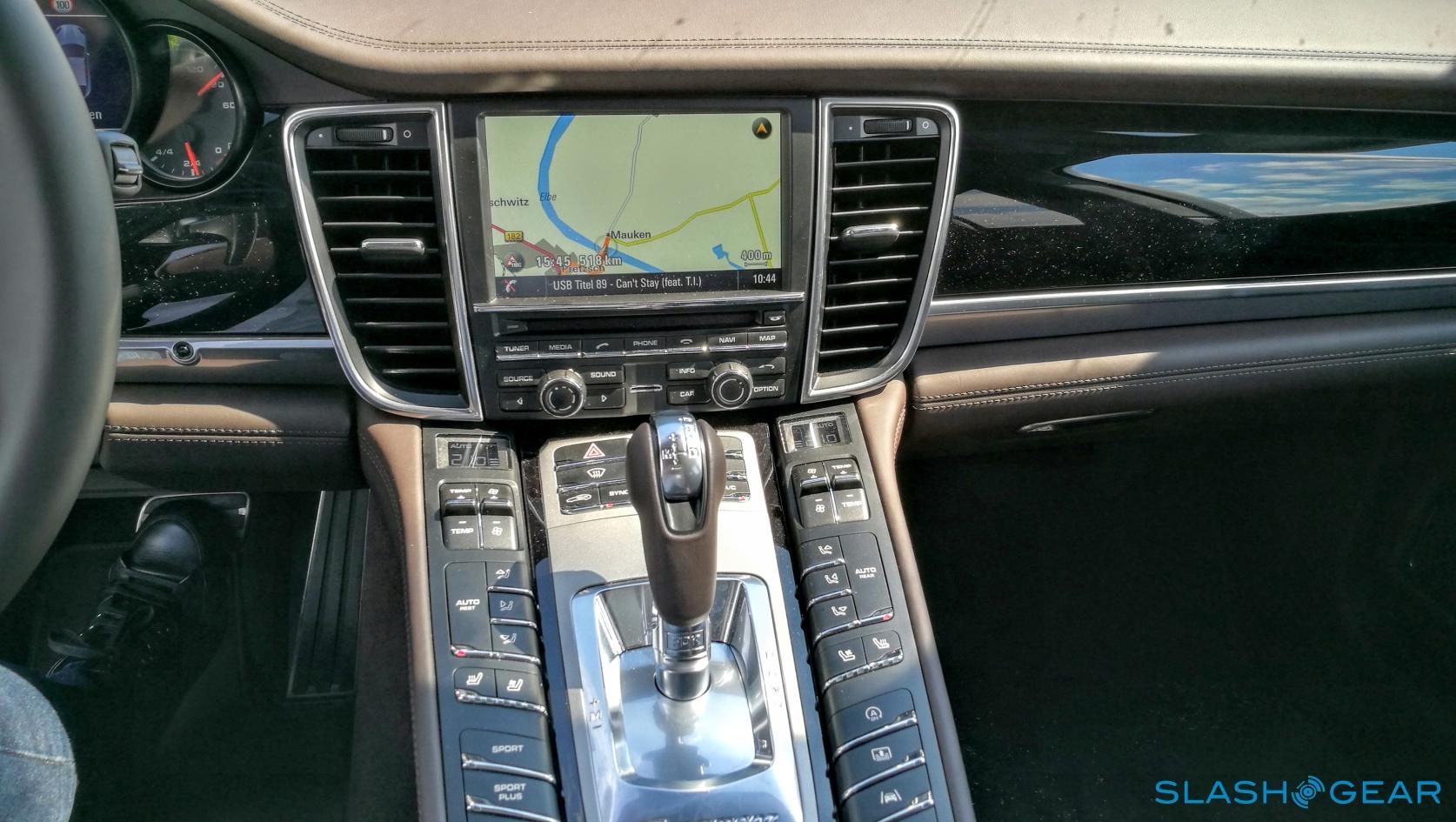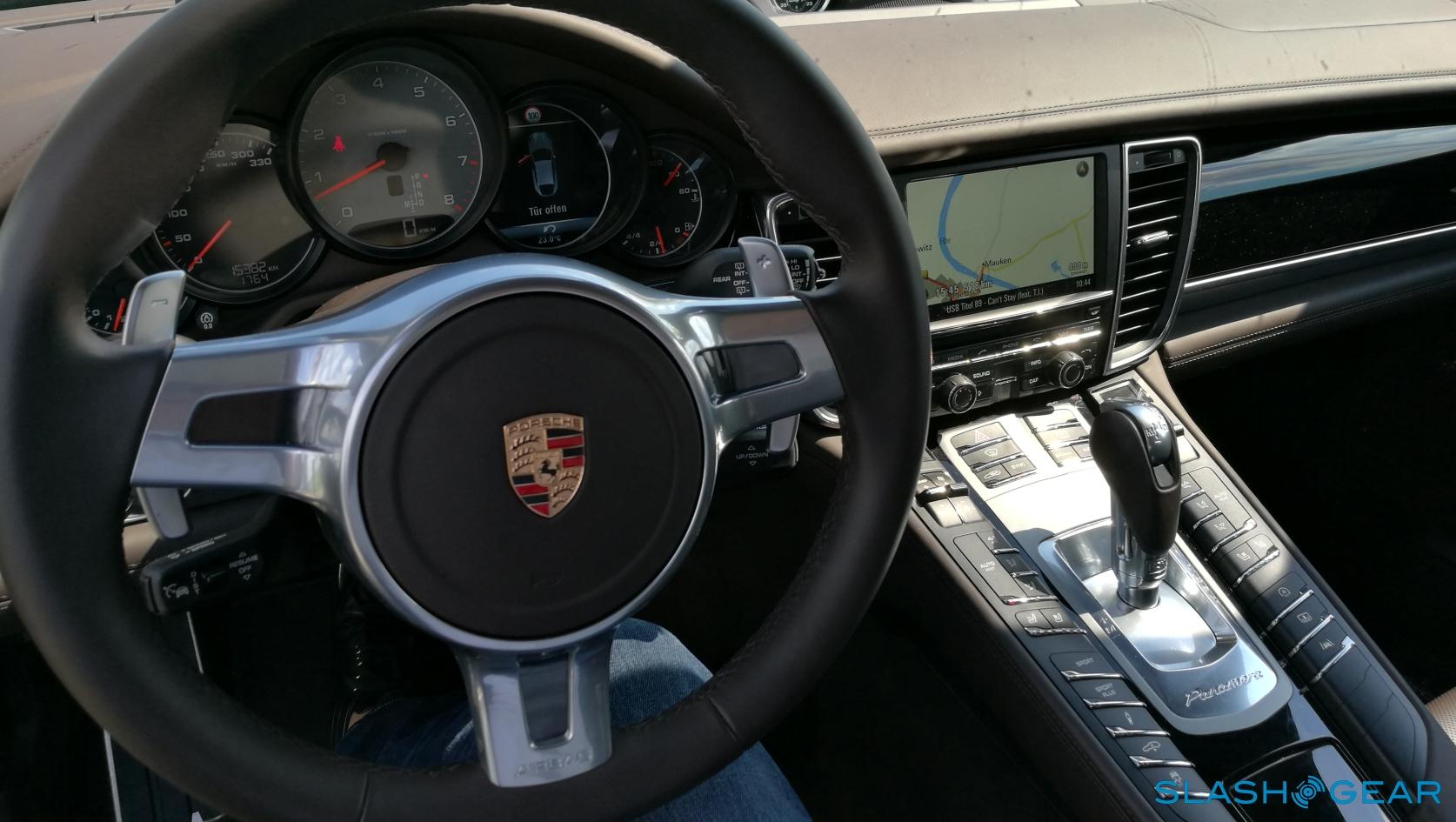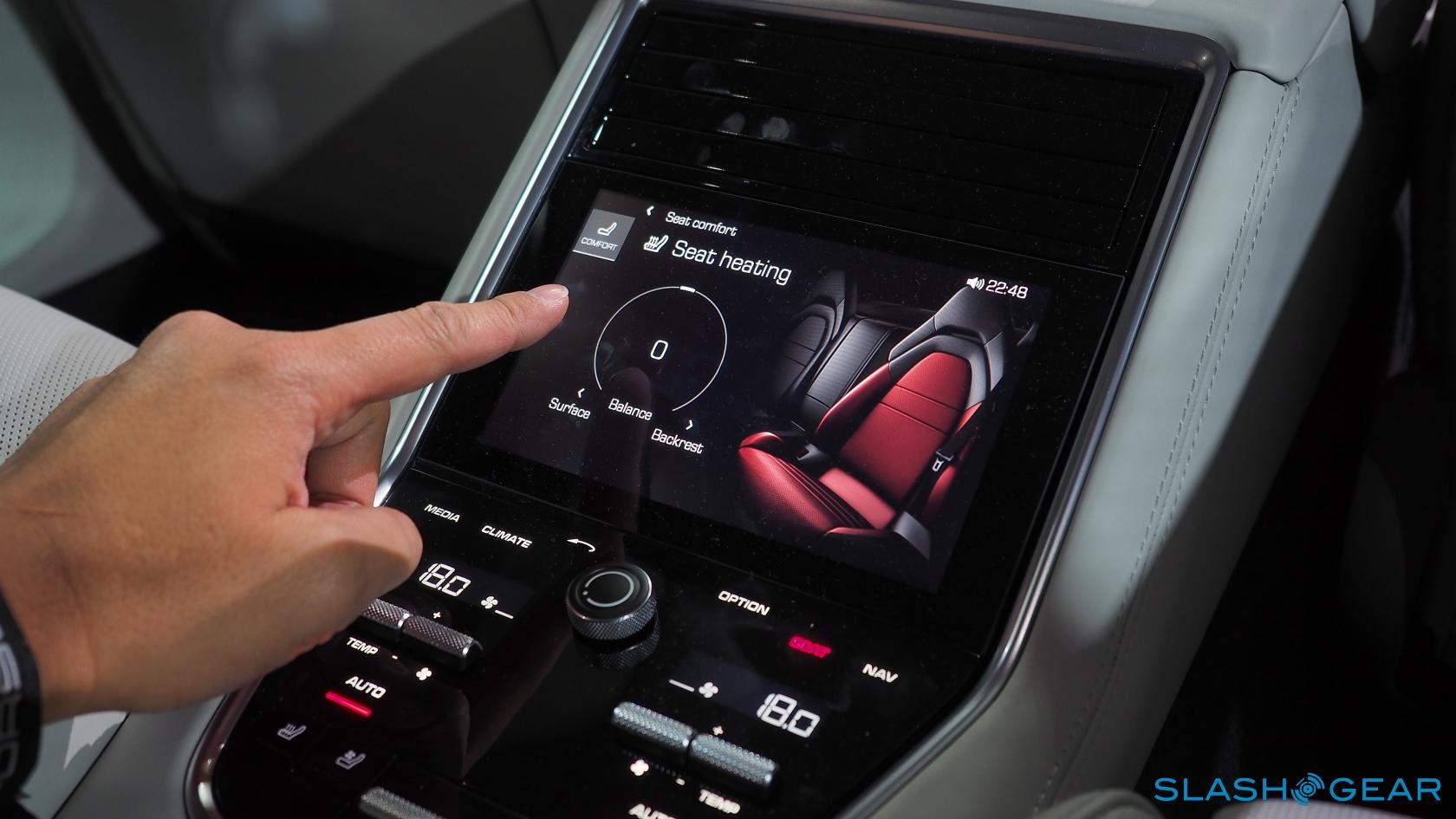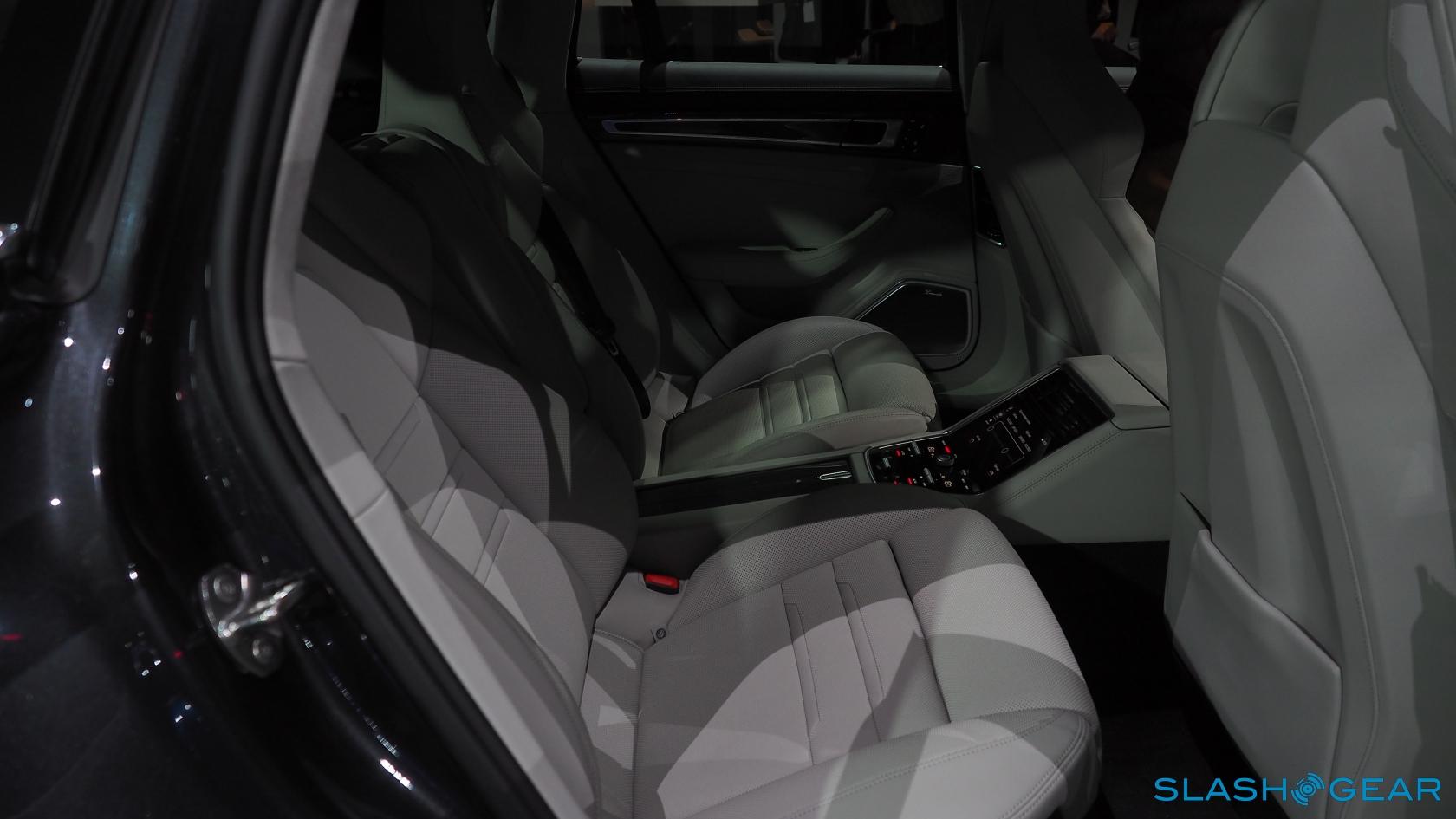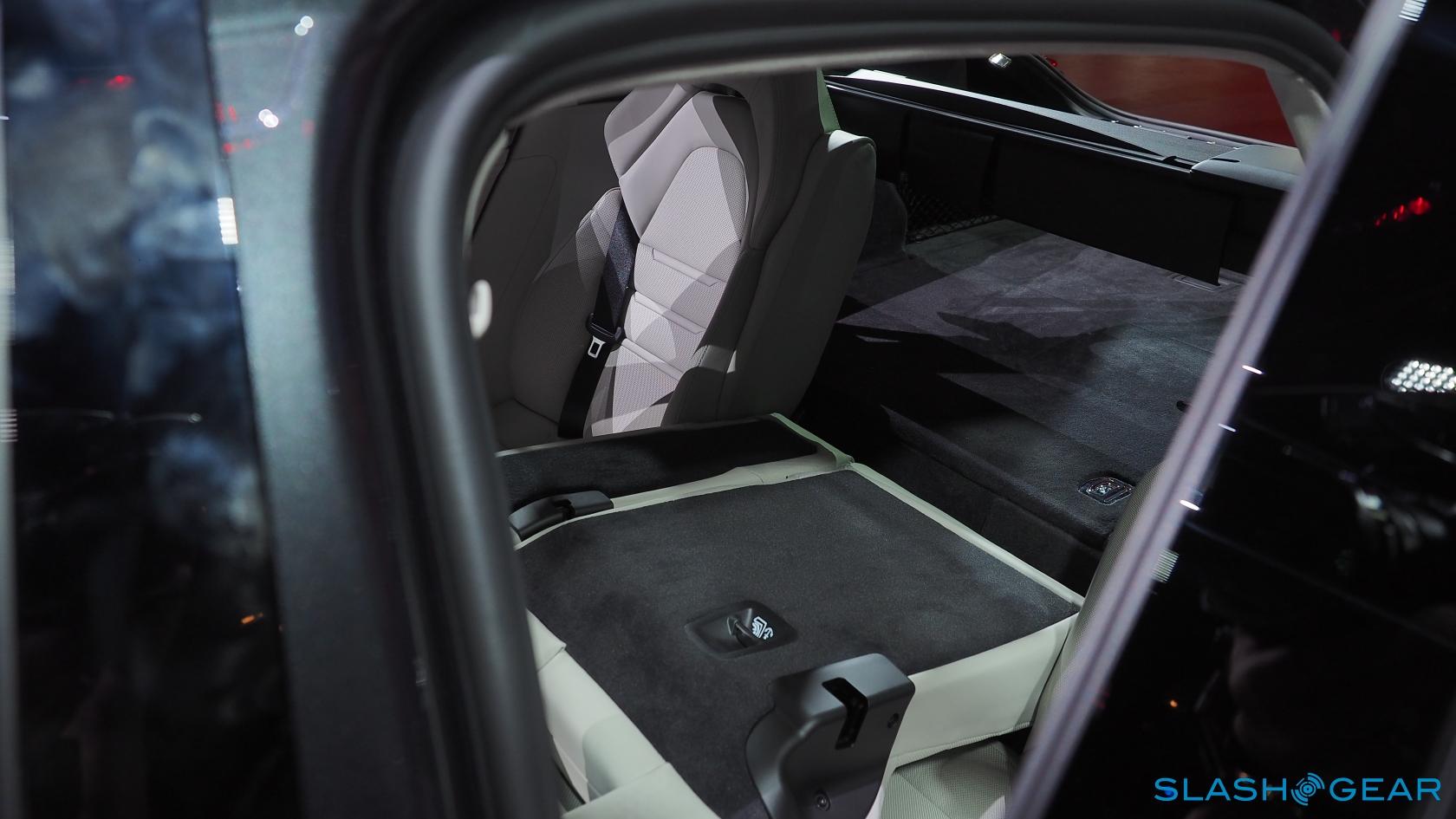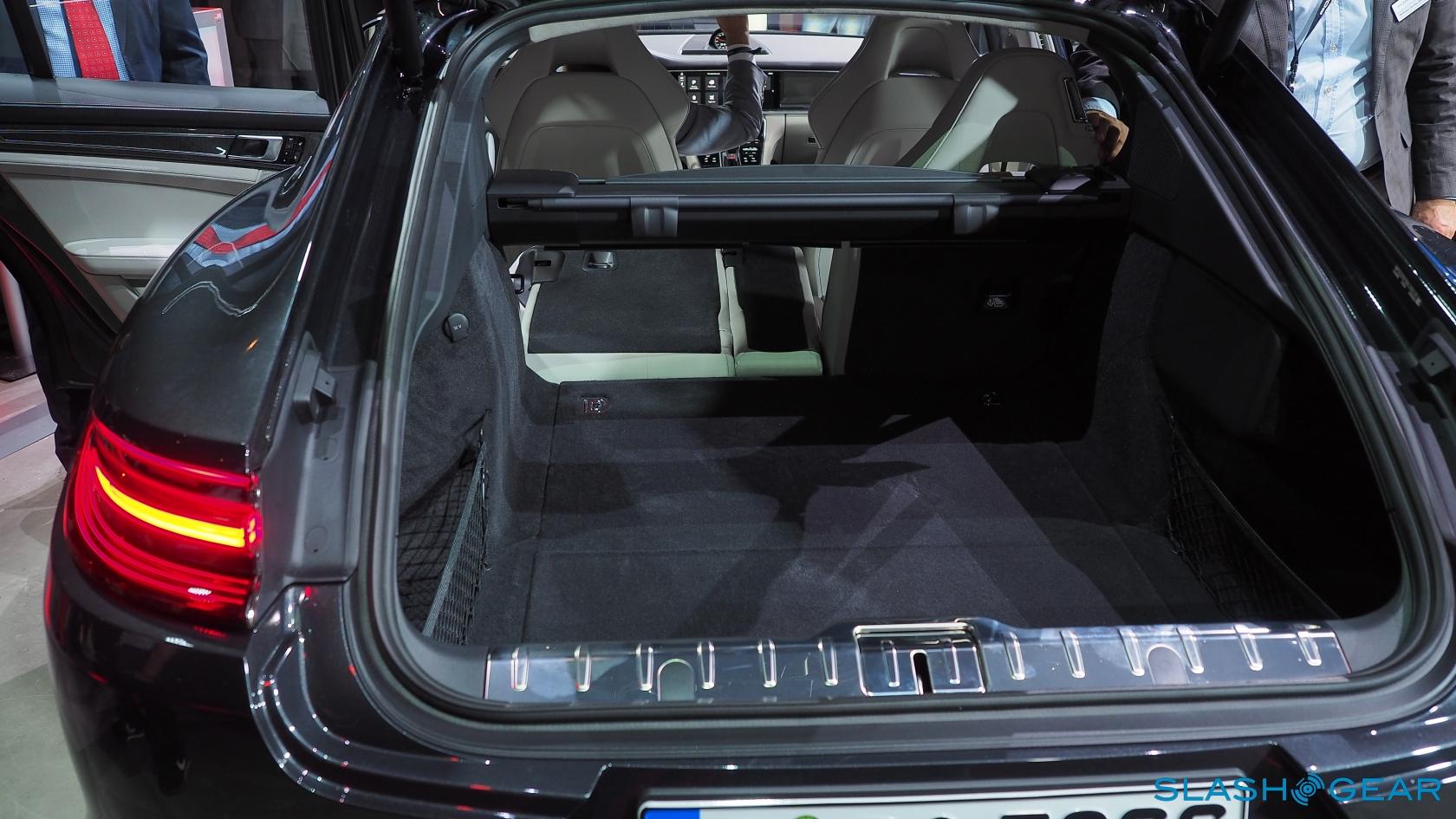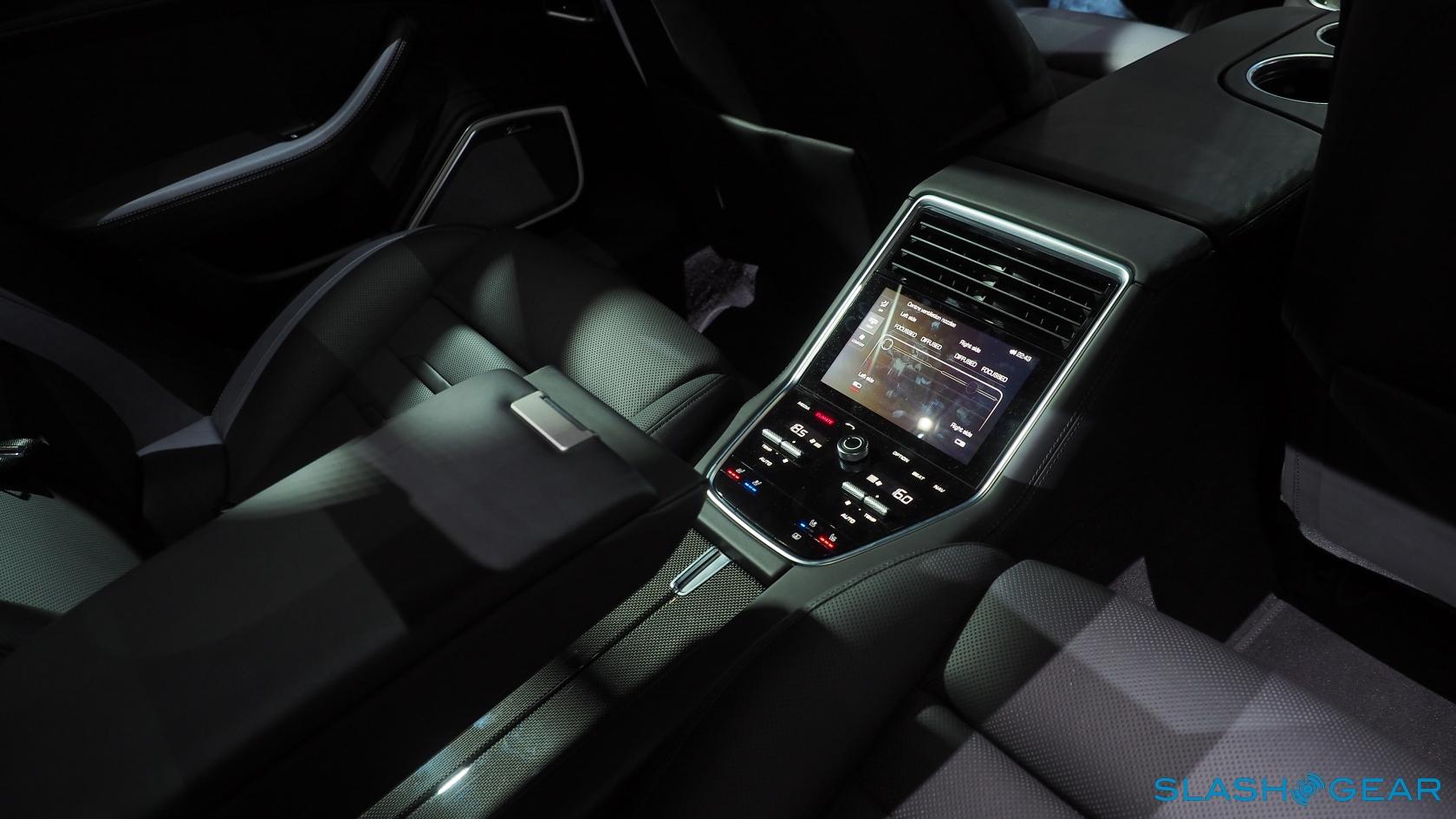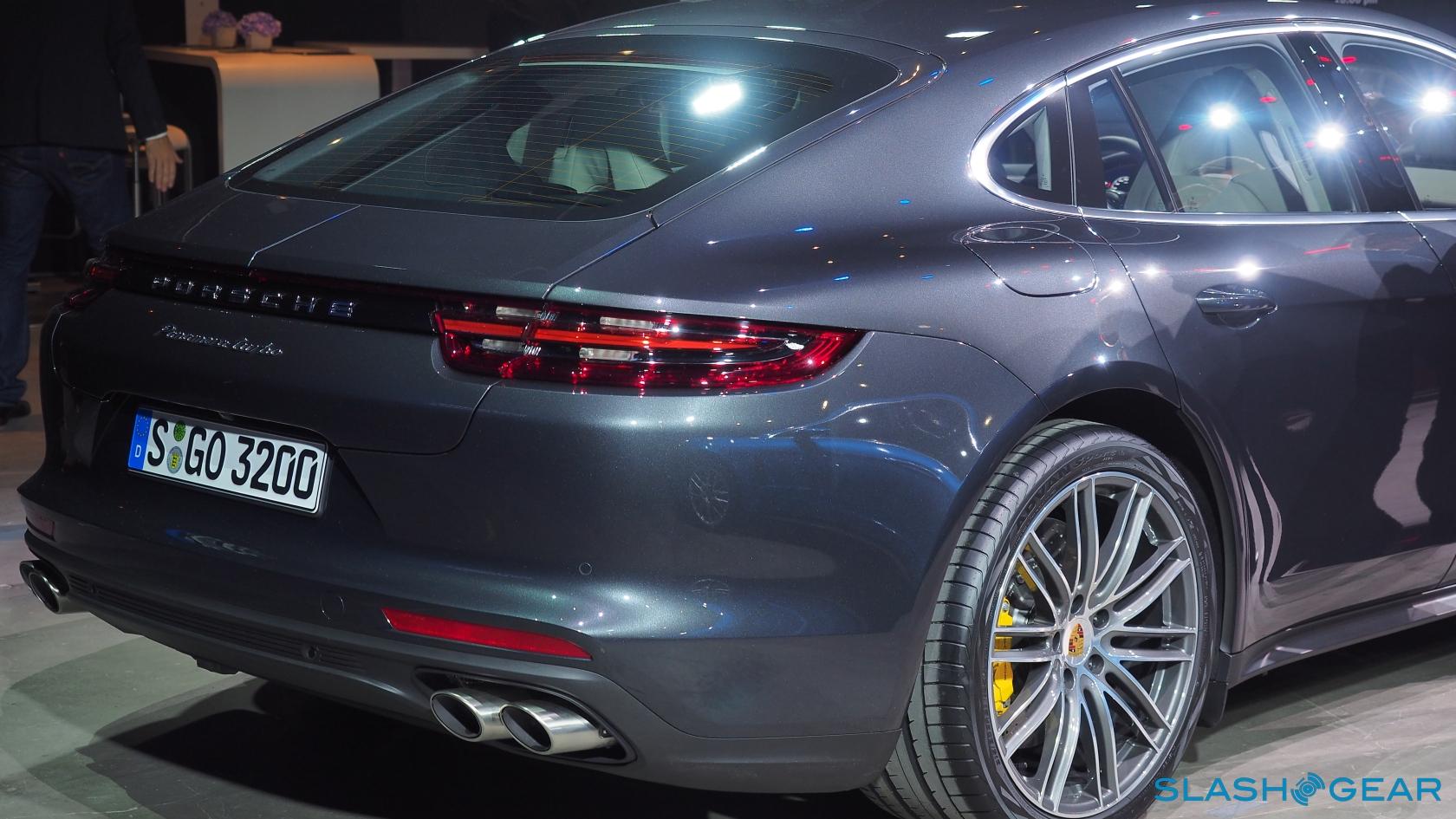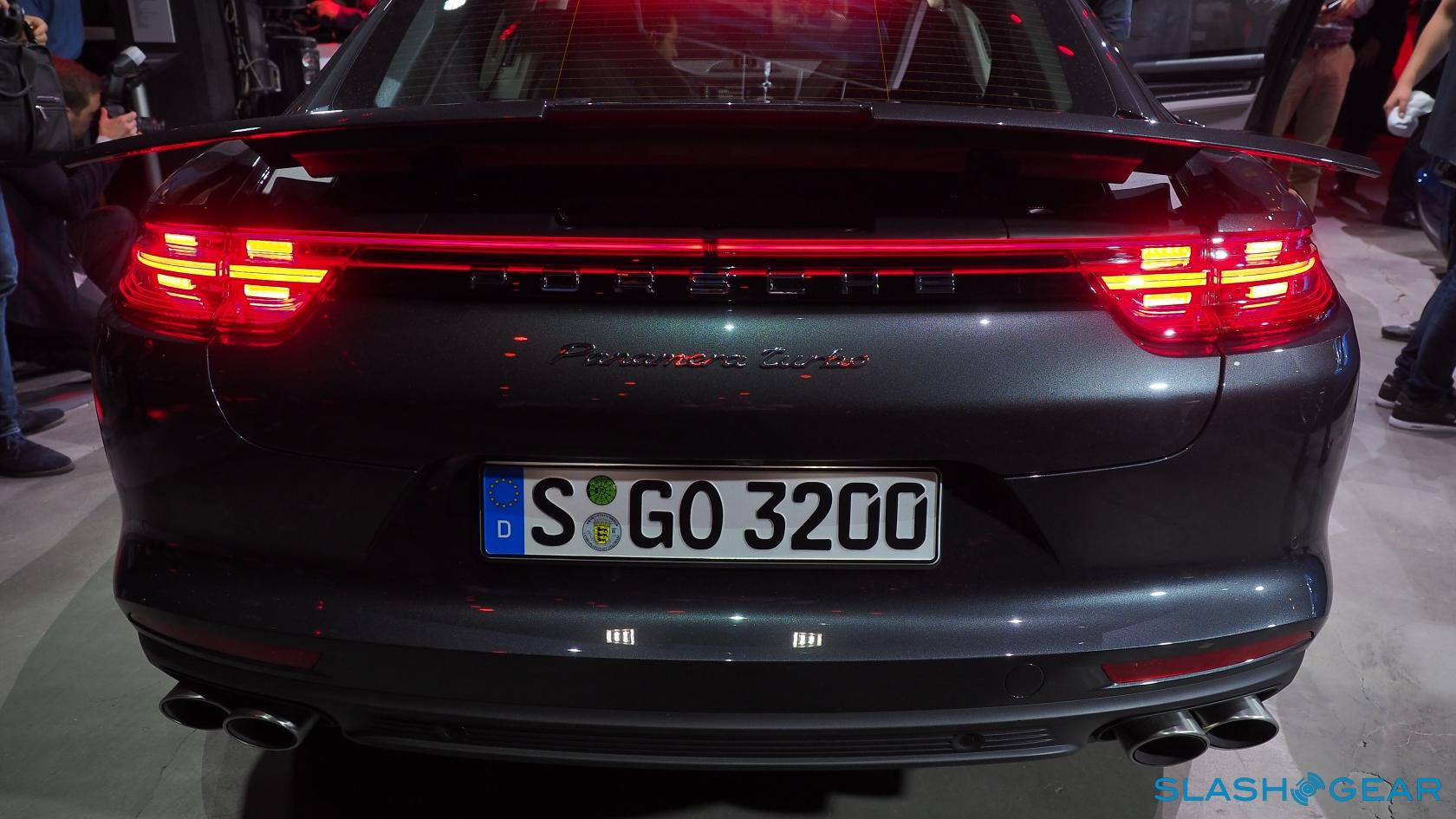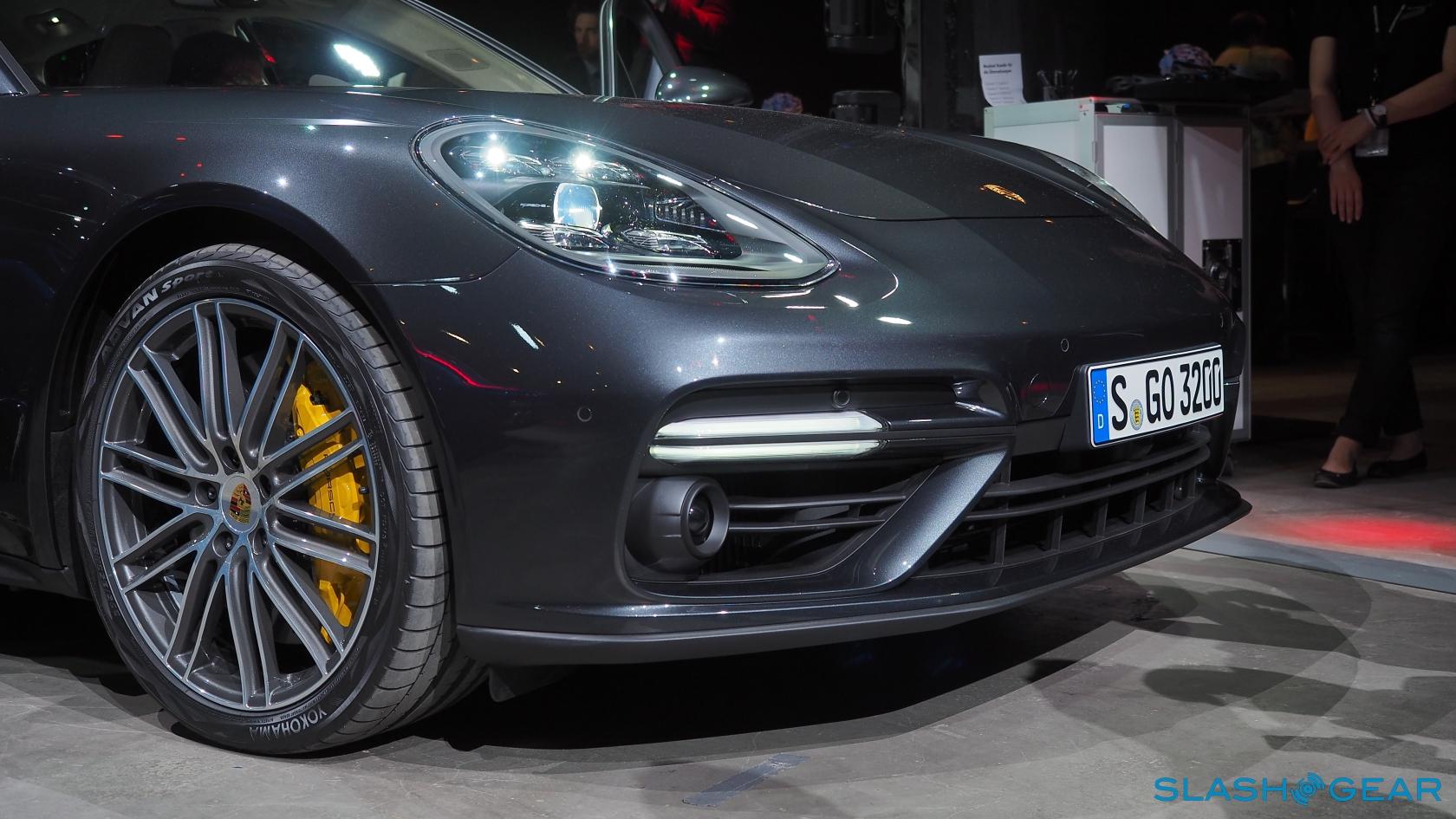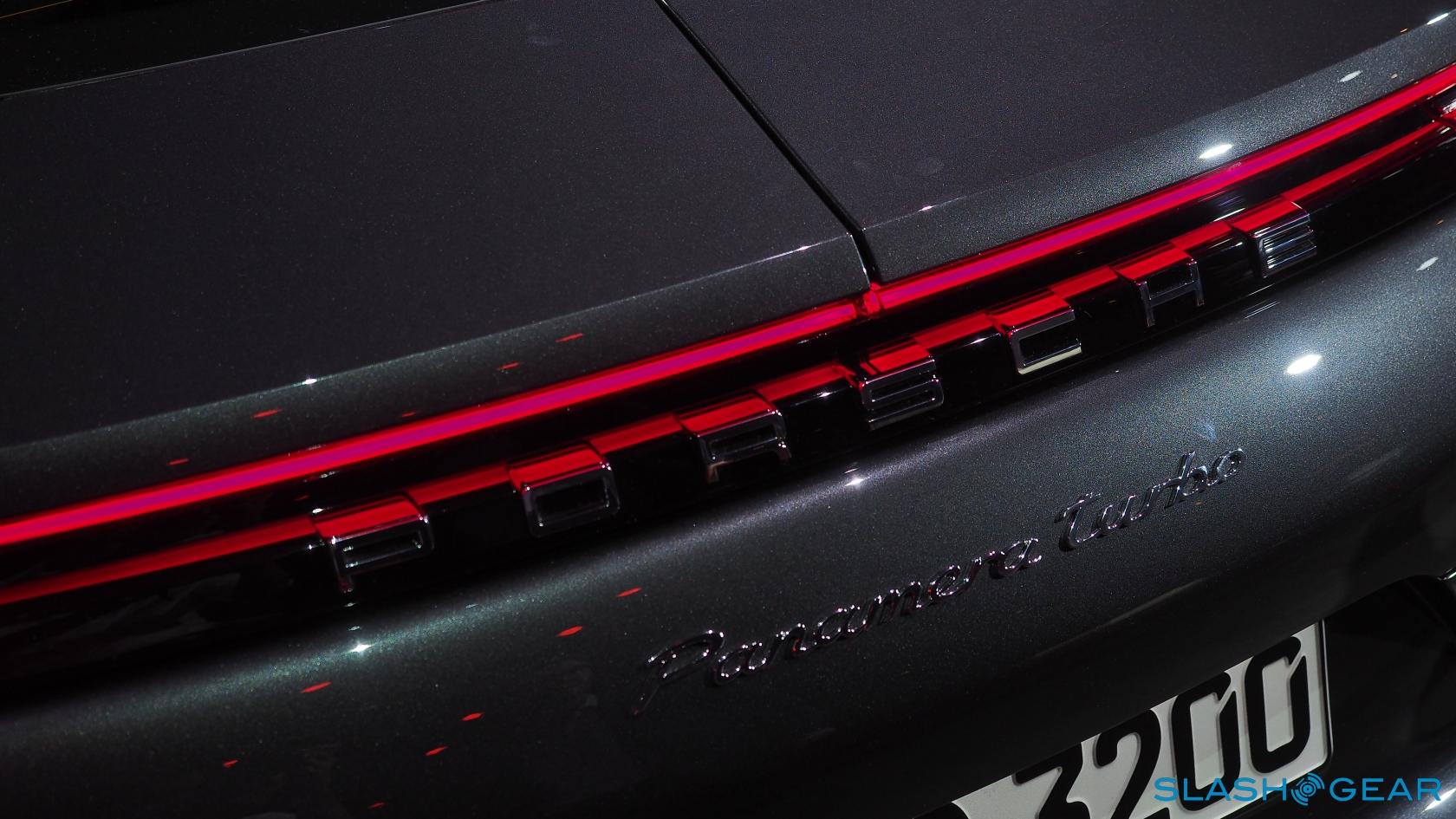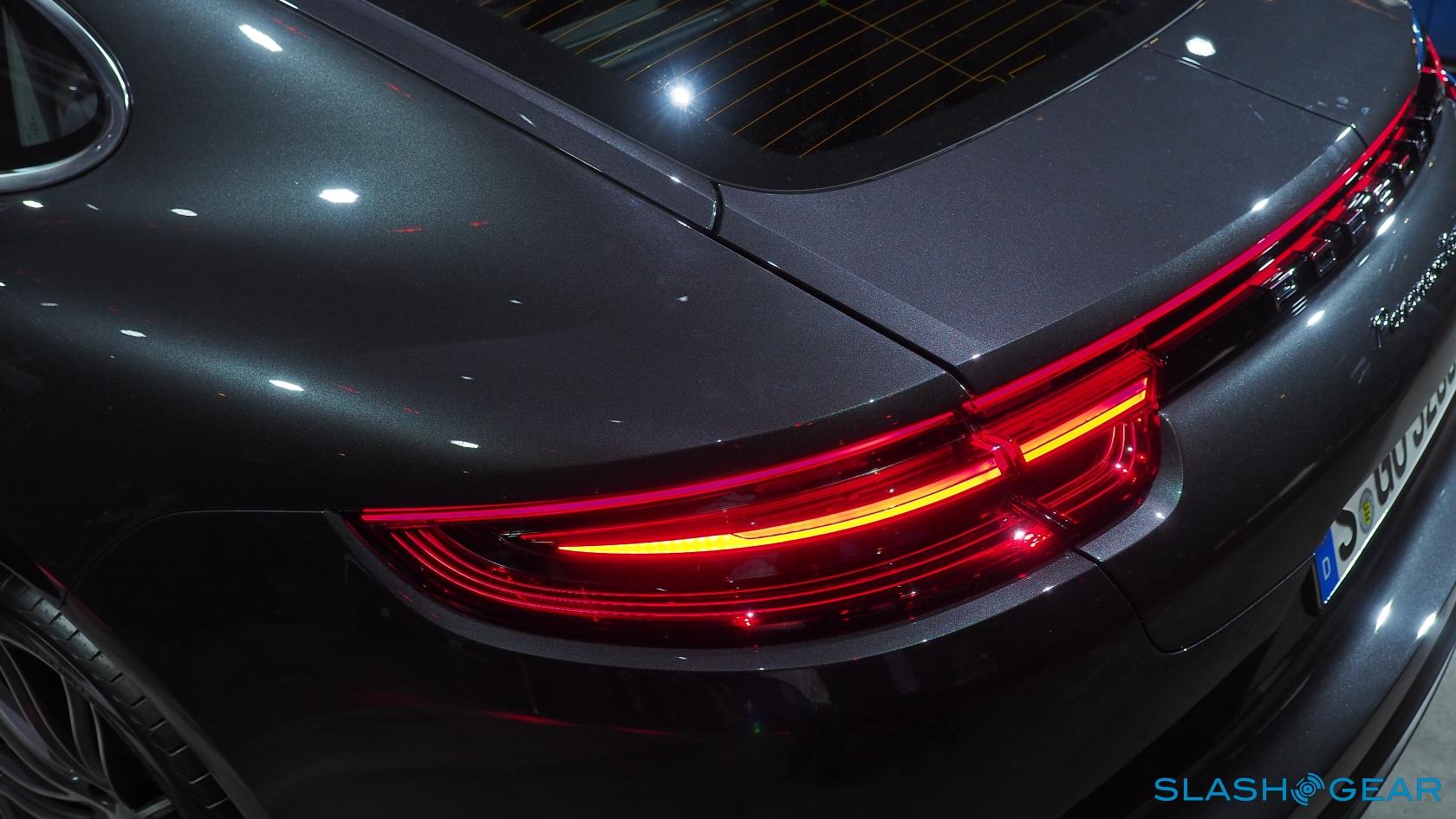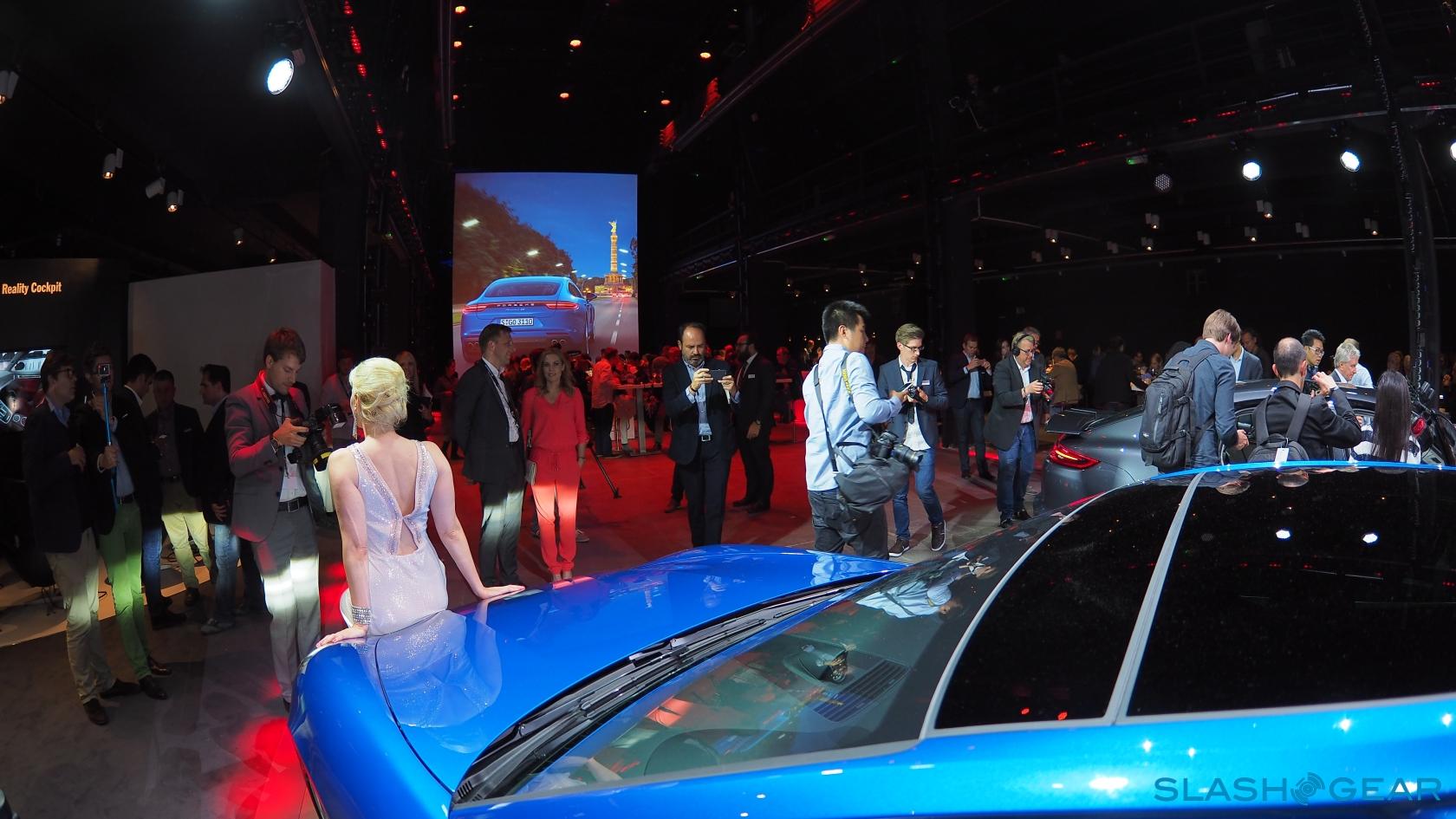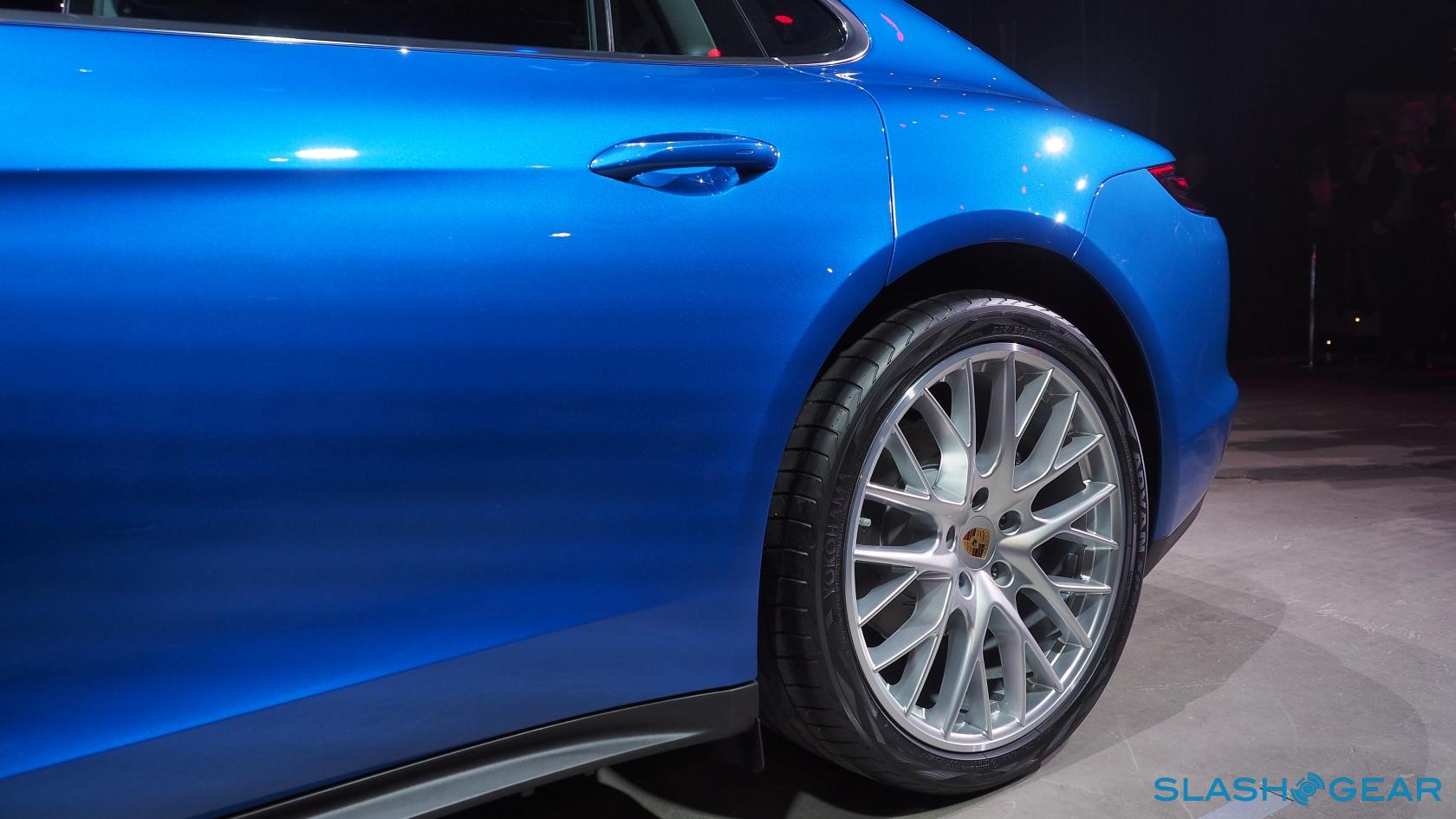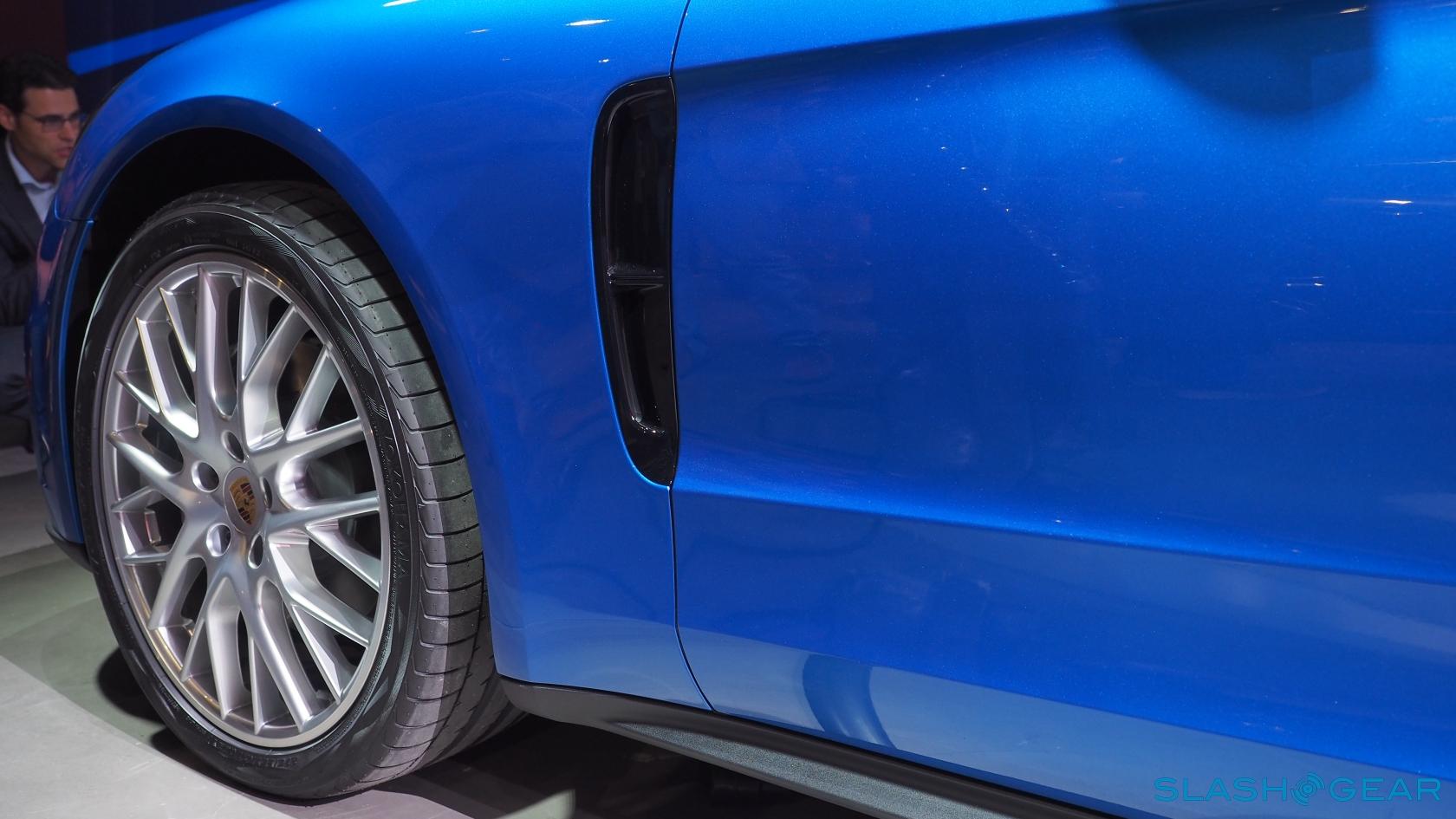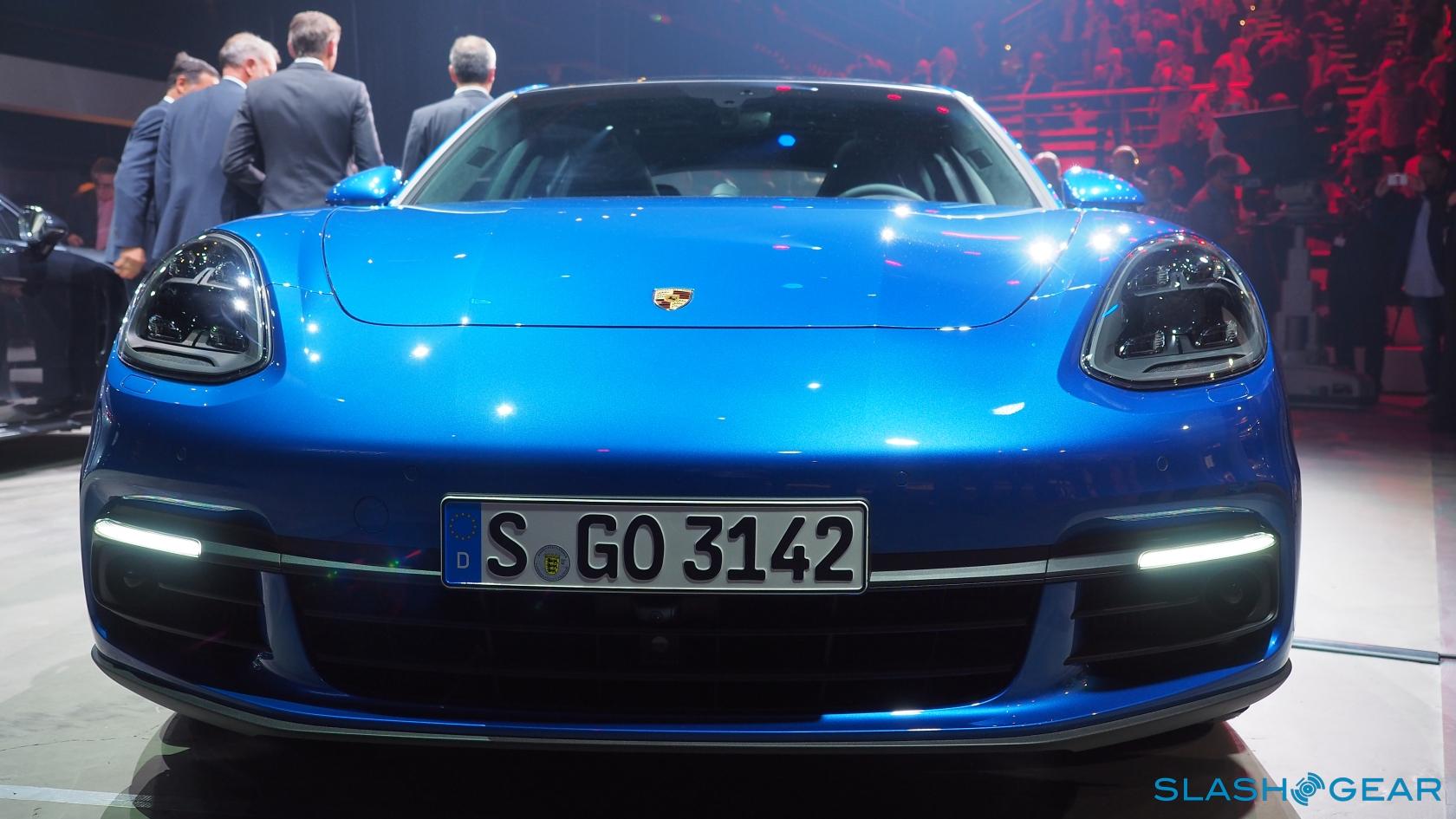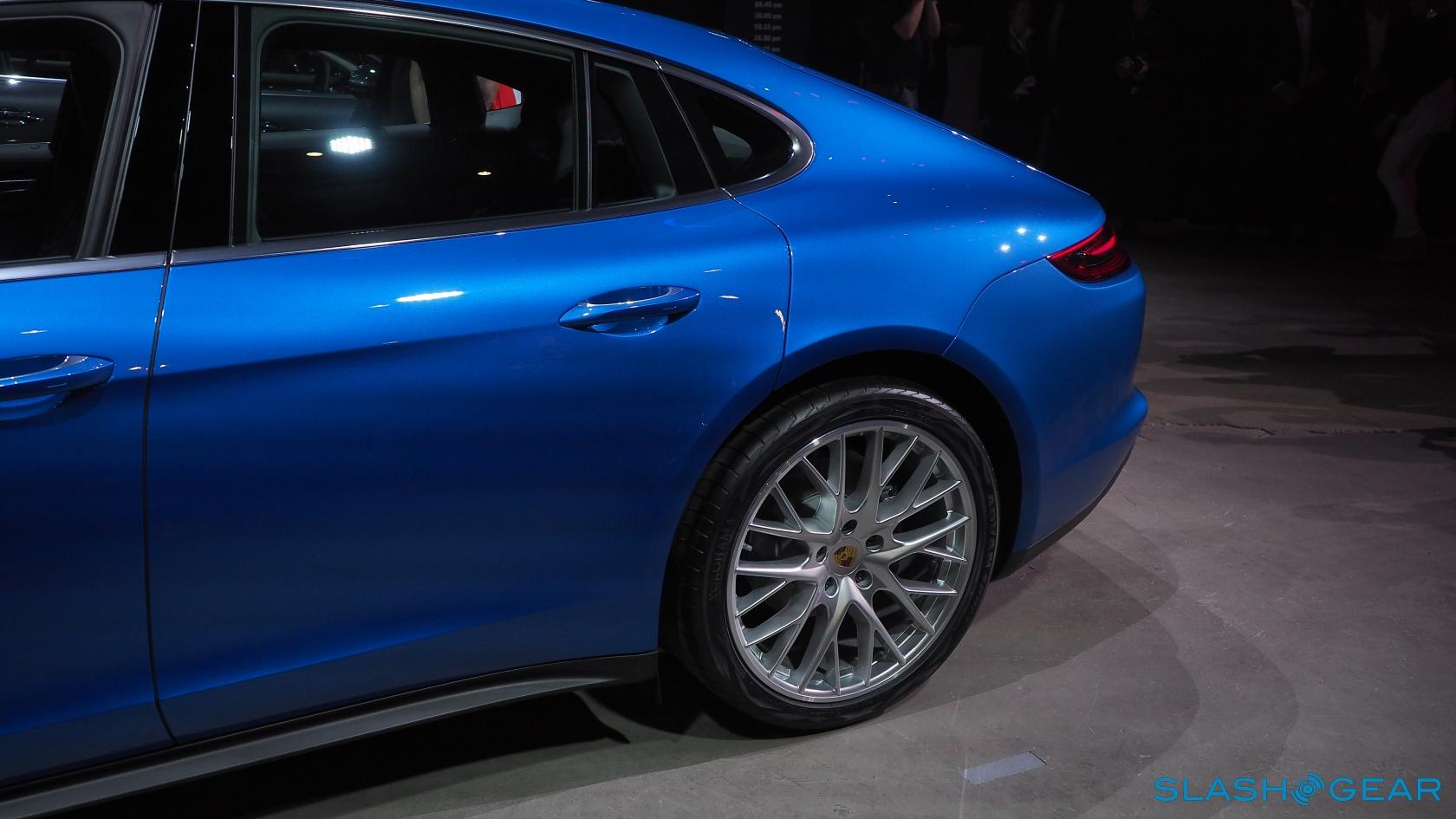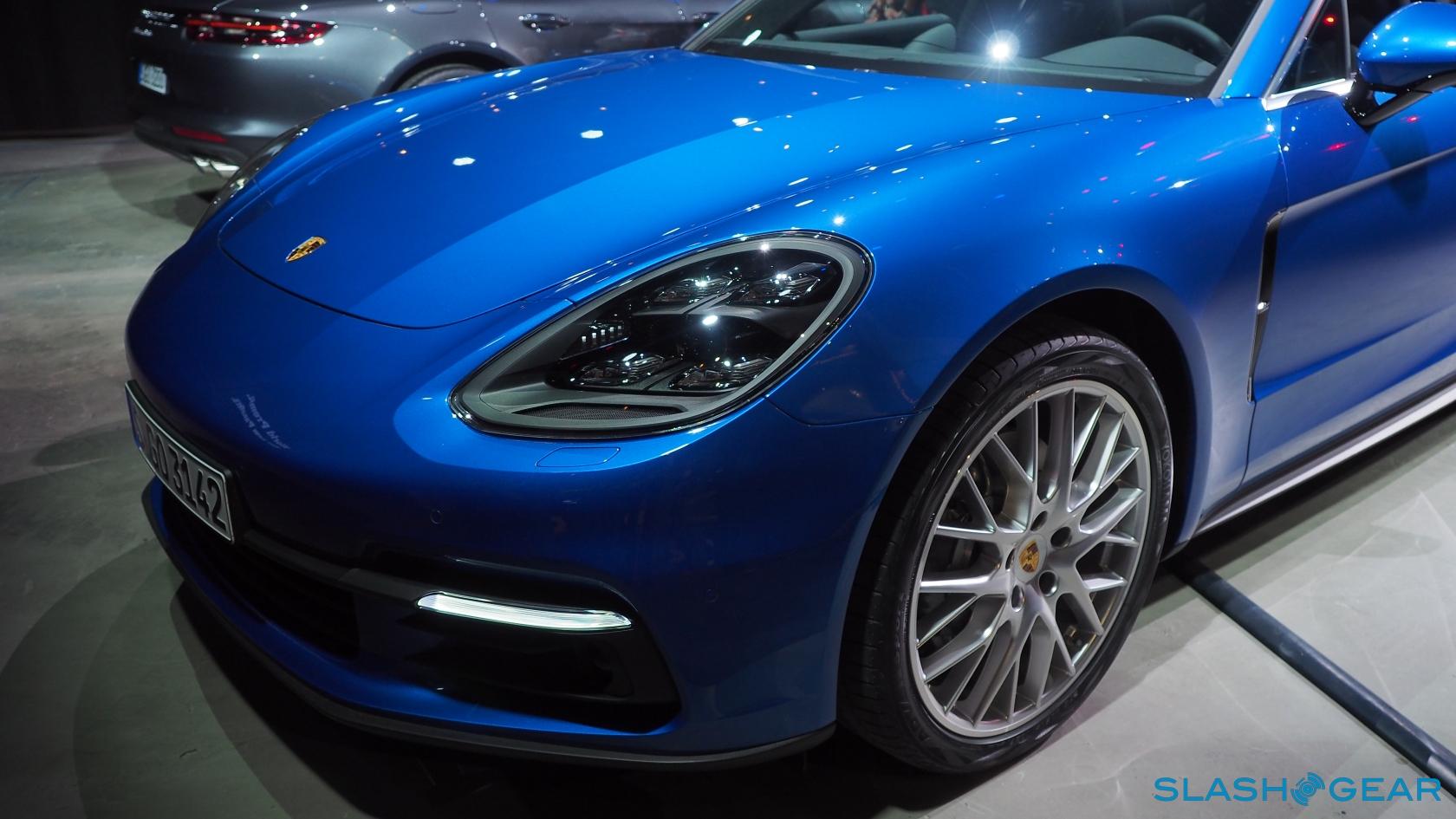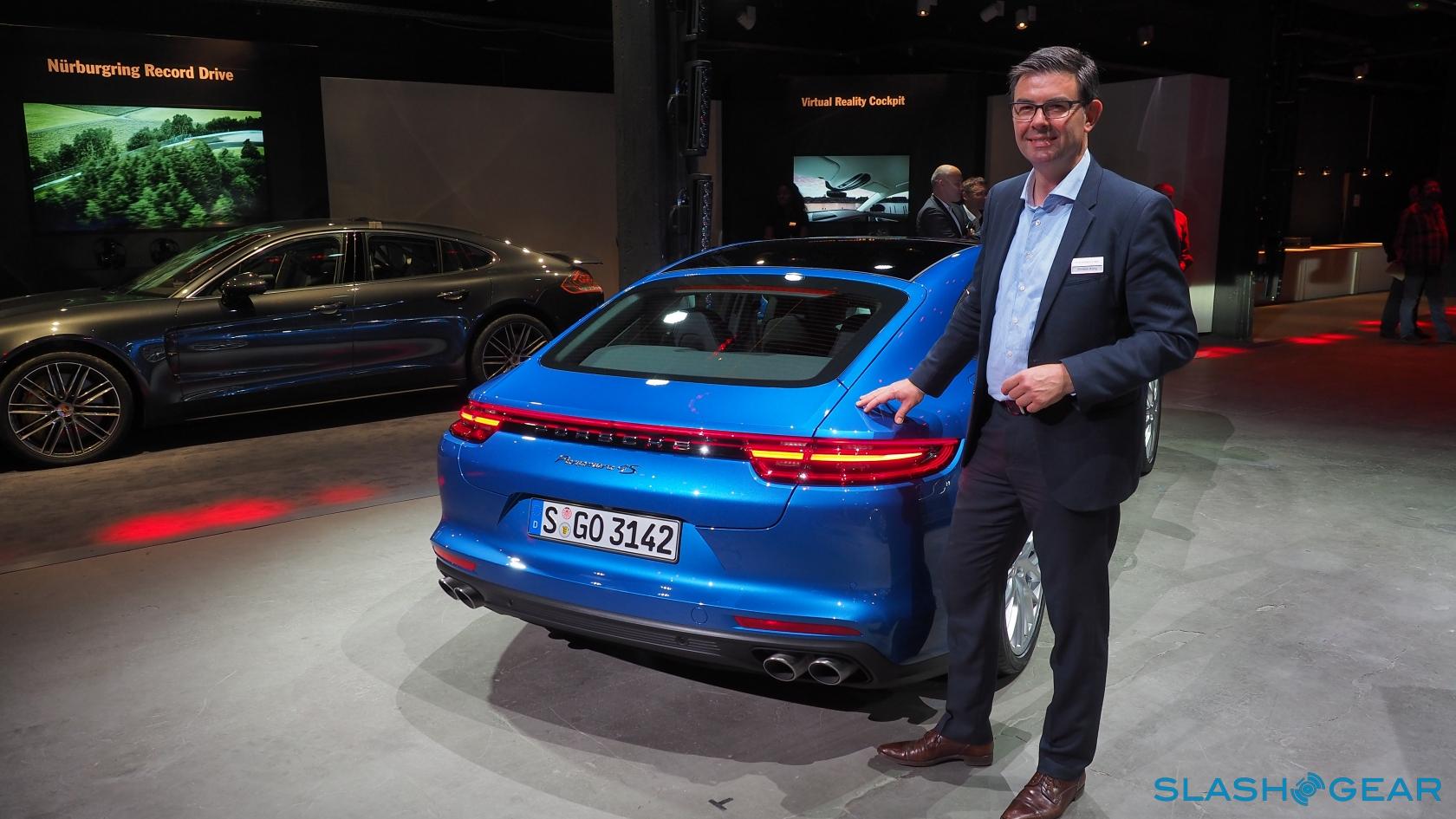2017 Porsche Panamera 4S And Turbo: Every Techie's Dream Car
For Porsche, unveiling the new Panamera isn't just about replacing one of its best-selling models, it also ushers in a whole new era for the automaker. When Porsche launched the Panamera four-door sedan back in 2009, it was a couple of years before I had kids. Though anything is possible, to my mind it was unimaginable that you could make a four-door version of the 928, the car that was to me – next to the 911 – the heart and soul of Porsche. After the initial shock, I never really gave it much thought.
Fast forward to June 28, 2017, and Porsche unveils the second generation of the Panamera. Two things have changed in my personal and professional life. First, I now have two children at the age of three and six. Second, automotive has become one of three major areas for SlashGear, and one which takes up 95-percent of my time. So has my perspective of the Panamera changed over the last eight years? You bet.
Suddenly I found myself thinking more critically about performance, ride, handling, engine displacement, horsepower, tech, safety features and, most importantly, can I squeeze my family of four in the Panamera comfortably?
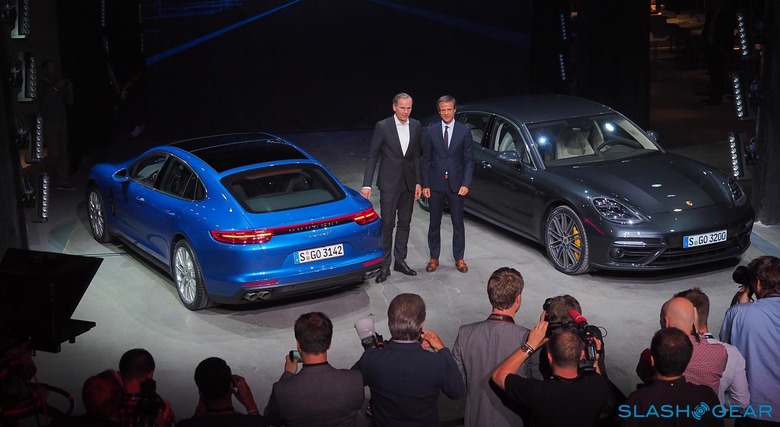
Sadly we're still a few months out from being able to drive the new car, so be sure to revisit SlashGear for my first driving impressions. Instead, after Porsche took the wraps off the 2017 Panamera, I headed to Leipzig, Germany to speak to see product expert Calvin Kim and watch how the four-door gets built from start to finish: turns out, they're wasting no time in getting the update onto dealership forecourts.
I also had the opportunity to experience Porsche's line up of 911s, before a road trip in a loaded Cayenne SUV across Germany's unrestricted autobahn, and if the new Panamera's performance and handling is even 90-percent of what the 911 and Cayenne deliver, I'll be a happy camper. That's something for a separate article, mind.
Welcome to Porsche 3.0
I said this was a new age for the German automaker, and I'm going to arbitrarily dub it the Porsche 3.0 era. Everything about the Panamera is new, inside and out, and while there are the usual luxury and performance features – some standard, some optional – there are a couple of key technologies being introduced that are not available on any other Porsche.
4D Chassis Control
One of the most exciting new features of the 2017 Panamera isn't something visible to the naked eye. Think of 4D Chassis Control System as your personal co-driver, made up of a number of different elements all working in concert.
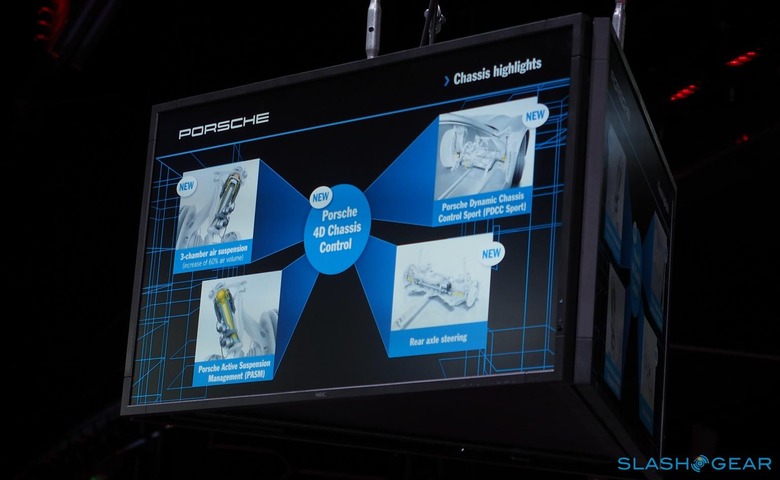
So, that means various parts of the car's chassis, along with the electronic power steering, rear axle steering, the adaptive air suspension, Porsche Active Suspension Management (including PASM electronic damper control), Dynamic Chassis Control Sport (PDCC Sport), and the brakes. They're coupled with external inputs, including engine management and your hands on the steering wheel.
Think of all of these components working together in a harmonious way. For instance, if I'm cruising around town with the family in Comfort mode, when all of a sudden, a road rage maniac decides to give chase and starts tailgating me. Now, imagine that I'm a professionally trained driver, and I need to take evasive maneuvers in order to shake him: traditionally, I'd need to manually switch drive mode to Sport or Sport Plus in order to let the engine know that I need it to be at the peak of its performance, and then second, switch the suspension mode to Sport or Sport Plus. The suspension stiffens up for cat-like reflexes, transmission shift points change to hold lower gears, and the wing deploys to add more downforce.
Now, what if I had 4D Chassis Control? Our imaginary maniac-road-rage dude gives chase, I stomp on the gas pedal to speed off and, a quarter of a mile later, I slam hard on the brakes to make a tight right turn and, because the bad guy doesn't have the clever Porsche systems, he's most likely not going to make the turn.
Okay, so it's more likely something you'd find in a movie than on the actual highway, but let's break this down all the same. When I hit the gas, the 4D Chassis Control System recognizes that, unlike the last stretch of road where I've been traveling at a consistent speed, all of a sudden I'm asking the car to accelerate at an abnormally rapid pace. As a result, you get a ripple effect from the core components outwards, so that all of the car's systems know to automatically switch to whatever performance mode is most relevant. It's similar to Porsche's Sport Response Button which, when pressed, gives you 20 seconds of the sportiest driving mode to take advantage of overtaking opportunities or clear, fun-filled stretches of open road.
The 4D Chassis Control System works in the opposite way, too. Back in our chase scenario, when you've escaped your manic tailgater and are driving at a regular speed again, the car knows to set everything back to Normal or Comfort mode again.
Porsche InnoDrive
InnoDrive technology doesn't drive for you, but as next-gen adaptive cruise control goes it's doing the next best thing. Rather than just tracking traffic in front of you, Porsche's system predictively optimizes the car's speed using high-resolution navigation data paired with various sensors including cameras and radar. That way, it can modify the transmission strategy to deliver the best driving experience for the road ahead while at the same time reducing fuel consumption.
More specifically, InnoDrive uses all the real-time data as well as road information for the 1.8 miles ahead, calculating when to shift gears, speed up, slow down, or maintain a constant speed.
Let's say you've got adaptive cruise control set at 75 mph and your Panamera is following a medium distance from the vehicle in front. That car speeds off while you need to enter an on-ramp with a much slower speed limit of 45 mph. If you don't intervene and apply the brakes yourself, it's highly possible the car could spin out of control or, at the very least, be a rough experience for you and your passengers.
With InnoDrive, the system would read the 45 speed limit sign – or, when one doesn't exist, use topographical road features (i.e. gradient and corner radii) – and know to slow down to a safe speed. Remember, the system has already started to figure out its strategy up to 1.8 miles ahead, in order to predict your likely next move. The car also takes into account the drive mode you're in, so if you're out on a leisurely cruise with the family it'll opt for a smoother throttle map and the brakes will be much gentler than they would be in Sport or Sport Plus.
Honestly, it sounds almost too good to be true and I'm looking forward to seeing whether the theory matches the experience; talking to a couple of folks at Porsche that have been testing out the early beta, the common response I got was "it's freaking cool."
InnoDrive is combined with Traffic Jam Assist, primarily used during heavy traffic on freeways at up to speeds of 37 mph. The system will gently steer the car to keep it in the middle of the lane, all the while maintaining a set – and customizable – distance from the vehicle in front. In addition to steering input, the system also articulates the gas and brake pedals, essentially semi-autonomously driving for you.
I've tested other Traffic Jam Assist systems such as the technology Audi offers on select cars, and totally love them. It's important to remember that every 10-15 seconds you're required to place your hand back on the steering wheel and, should you need to, be ready to take over control if the system demands it.
What else is new on the 2017 Panamera?
There's a lot more to the new Panamera than just the changed design. The new adaptive air suspension, for instance, features three-chamber technology: it's standard on the Panamera Turbo and optional on the 4S. Normally, there are only two chambers for air, but with three chambers there's more potential volume yielding a broader spectrum of settings. In Sport Mode, that means more aggressive driving dynamics, while Comfort Mode should be more cosseting than the old Panamera with its dual air chambers.
It's not the only place where greater flexibility has been introduced. The four drive modes – Normal, Comfort, Sport, and Sport Plus – each have deeper customization over the various factors they adjust. Under the overall umbrella of "Sport" mode, for example, you can make tweaks to parameters such as throttle mapping, steering feedback, transmission shift point, when the rear wings pop up, and even how bright the headlights are.
Speaking of the Panamera Turbo's Wing, it's frankly badass. The foldout mechanism is essentially the same as the outgoing Panamera but it splits apart as it extends to provide additional surface area; it also looks better with its increased size. Exactly when it deploys depends on the mode you're in, the load of the car, and how you're driving; according to Porsche's Panamera product expert Calvin Kim, the intention is that, when you think that you'd need some downforce or lift reduction, the chances are that the wing has already deployed.
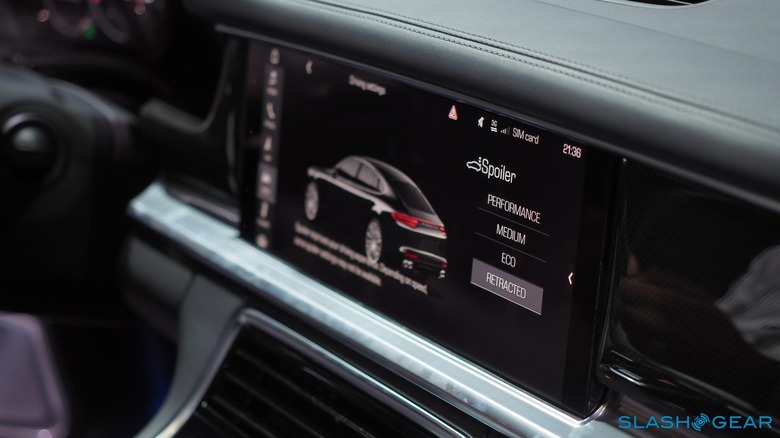
Alternatively, it's possible to manually pop it out to impress people in parking lots. Unfortunately, while the smaller wing is currently available on the existing GTS, turbo, and turbo S, the new version will only be offered on the 2017 Panamera turbo.
Interestingly, unlike traditional wing-design spoilers that allow for natural airflow between the wing and the body of the car, with the Panaramera turbo that's not the case. In fact, when the wing is deployed airflow is restricted because it's raised three to four inches up. As Kim explained it to me, downforce is counter-efficient as it improves driving dynamics: in order to have both driving efficiency and dynamics, the best way is to have a wing that tucks away and only pops out when its needed.
Something far less obvious than the Panamera's trick wing are the active front flaps, which open and close to adjust how much air makes it through to the car's radiator. It's something Porsche already offers on the 919, entire Macan, and 911 lineups, as well as on the 918 Spyder.
When closed, aerodynamic slipperiness increases, but when opened you get more air coming through to cool down the engine. The car's brain is smart enough to know when to open or close based on how hot the engine is running: if you're cruising at 65mph and the engine heat is low, the system will close up the vents to improve aerodynamics. Alternatively, in cold climates, the Panamera can retain heat by closing the flaps so that, the next time you go to start up the engine, it's not going to be as cold.
Porsche Advanced Cockpit just for the driver
Porsche's love affair with the traditional tachometer continues, but the analog dial is now flanked with a high-definition 7-inch display on each side. Neatly tucked toward the lower right side of the tachometer is the digital speedometer, along with the display for current drive mode, the engine status light, and the gear indicator.
The left display splits into larger and smaller digital panels where the first immediately connects to the rev-counter showing the speed limit counter, trip details, and other miscellaneous details. The smaller pane on the far left is driver-configurable, showing things like outside temperature.
The right-hand side display, meanwhile, offers much more information. Again, you can customize what you see, but it could show online navigation details, the view from the night vision camera, Sport Chrono data such as last lap and fastest lap time, G-Force, tire pressure, all-wheel drive status, fuel gauge indicator, engine temperature and day, date, and time.
Both "retina resolution" LCDs are controlled by scroll wheels in the three and nine o'clock positions on the steering wheel. Optionally, if you tick the box for the Porsche Sport Chrono package, you also get a SPORT mode button along with the Sport Response Button. The Sport Response Button – aka push-to-pass – tunes every aspect of the car to its most aggressive setting for 20 seconds.
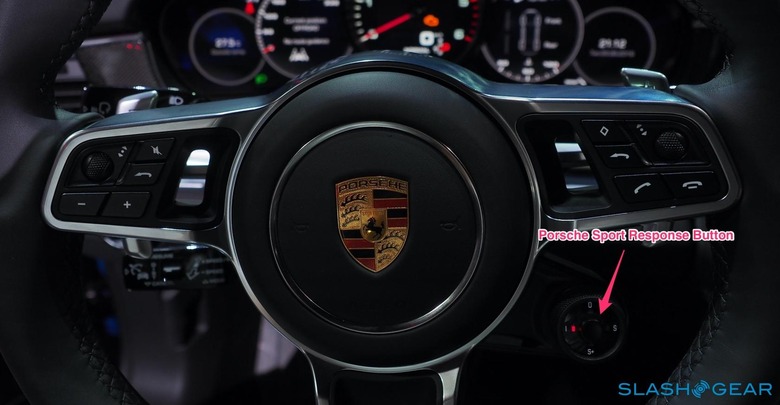
It's not the first time an automaker has used high-res displays for the dashboard, but Porsche certainly gets the placement right for the driver's line of sight. There are more configuration options than Audi's Virtual Cockpit, too.
A high-tech center stack
The all-new interior doesn't end with the driver's displays, and there's also a massive 12.3-inch touchscreen in the center console. Running at 1920 x 720, it's powered by a dedicated NVIDIA GPU, separate from the processor the driver's screens rely on. Again, it's highly customizable – there's a tablet-style desktop onto which you can put weather widgets, ambient light shortcuts, and more – and everything feels responsive and immediate. Porsche consciously decided to leave out localized haptic response, however, which I personally think is a missed opportunity.
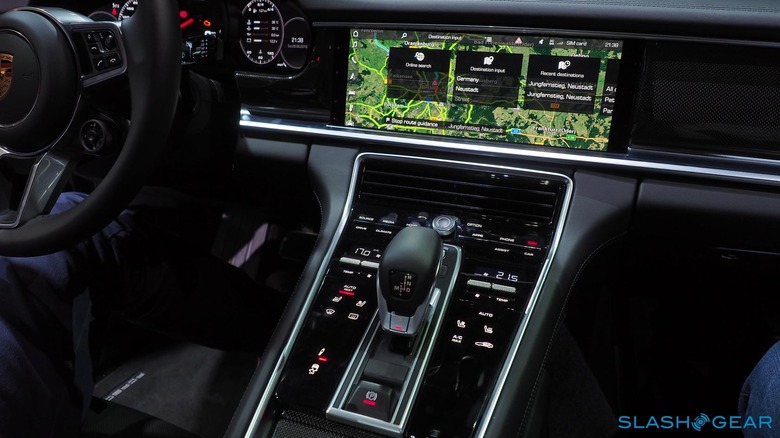
The menu structure is flat, for ease of use when you're driving and quick access to even some of the more granular settings. On the top left is the home button, while below are the shortcuts for Media, Phone, Nav, Drive, Climate, Sound, Apps, and Vehicle.
Each category has its own options – for instance, under Media you find Play, My Music, and Browse, including streaming services like Napster – and there's no shortage of local playback choice. Porsche gives you two SD cards slots, four USB ports, iPod support, its "Jukebox" – basically an SSD for your own music – and support for up to two Bluetooth devices, though that could change by the time the 2017 Panamera reaches stateside.
By swiping over from the right side of the touchscreen, you get to the navigation pane with details such as distance to destination, drive time, range, and arrival time. Conversely, you can flip the two panes around to show navigation in the primary display – with a choice of map, destination, traffic, and customizable "favorite" views – and tuck the media details away.
The old Panamera had physical buttons and switches for most things, to the point where the center stack felt like the board game RISK with its scattering of counters; the 2017 car does away with 98-percent of them, including the physical drive mode and suspension buttons. There's now a new screen offering a choice of settings, together with three suspension modes (Normal, Sport and Sport Plus), along with the position of the spoiler and the car's ride height.
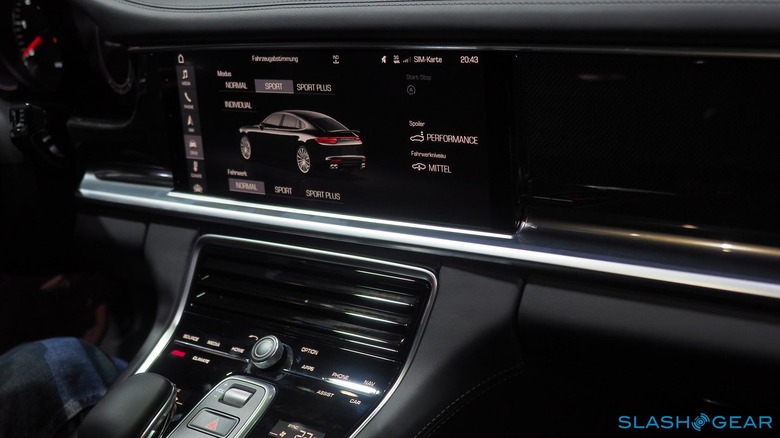
Porsche's reliance on the touchscreen doesn't stop there. Under Climate, as well as adjusting temperature, which vents are in use, and the heated seats, you can even control the angle of the air vents. If you're a tech junkie it's a dream come true.
Hoping into the back, meanwhile, and passengers in the rear are also treated to a center touch-display. Their air vents are also digitally configured, along with climate, seating positions, and navigation settings. During my brief test, everything felt perky and responsive, and it certainly feels modern, raising the Panamera's interior to Mercedes-Benz and Audi levels of refinement.
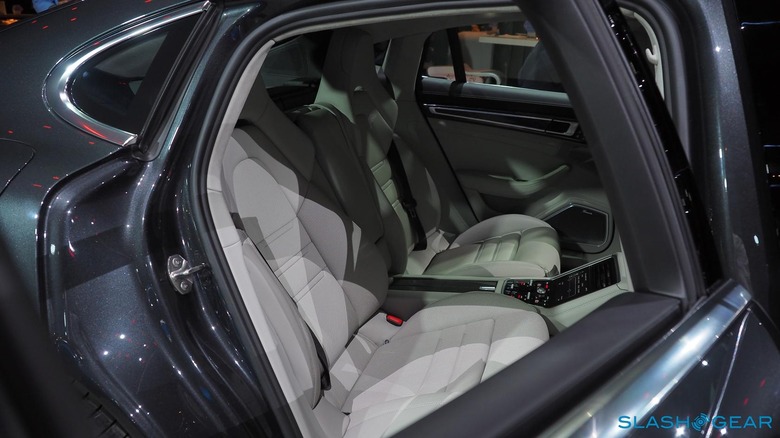
That's important, since it's luxury sedans from its German rivals that Porsche is hoping to usurp with the 2017 Panamera. First impressions suggest there's no technological compromise to be made in opting for the Porsche four-door, and we won't have long to wait to see how it compares on the road, either.
Expect the new 2017 Panamera to hit US showrooms in January 2017, with pricing starting at $99,900 (plus $1,090 delivery) for the Panamera 4S. The covetable Panamera turbo, meanwhile, with its eye-catching Transformer wing, meanwhile, starts at $146,900.
Porsche 2017 Panamera turbo
Porsche 2017 Panamera 4S

